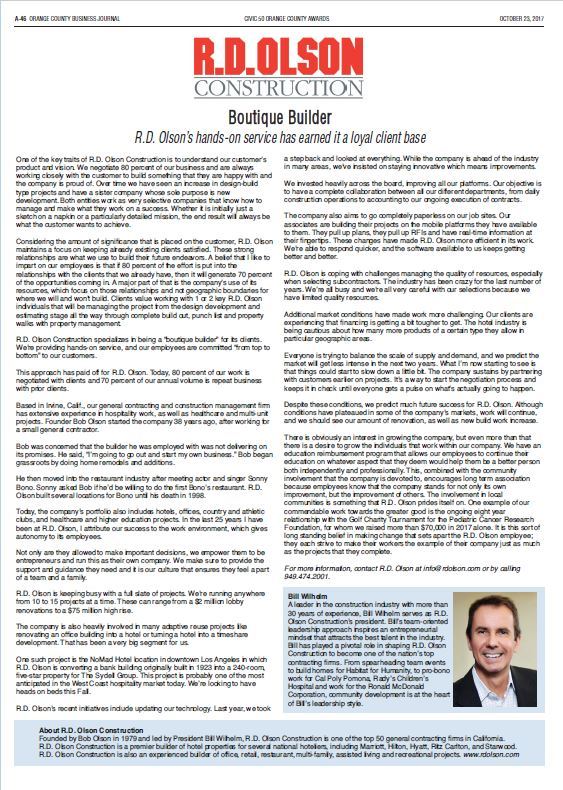R.D. Olson Company Picnic – September 15th, 2018
Non-stop Family Fun at Kiwanis Land
[portfolio_slideshow carouselsize=3]
R.D. Olson Company Picnic – September 16th, 2017
Fun times building family memories at Knott’s Berry Farm
[portfolio_slideshow carouselsize=3]
20th Annual – September 6th & 7th, 2018
R.D. Olson Annual Surf “Board” Meeting – 20 Gnarly Years!
[portfolio_slideshow carouselsize=3]
19th Annual – August 31st & September 1st, 2017
R.D. Olson Annual Surf “Board” Meeting
[portfolio_slideshow carouselsize=3]
AC Hotel, El Segundo – September 28th, 2018
R.D. Olson Construction Tops Out at the AC Hotel in El Segundo , CA!
[portfolio_slideshow carouselsize=3]
R.D. Olson Construction Completes Hotel Trio and Citrine Apartments in Sonoma County
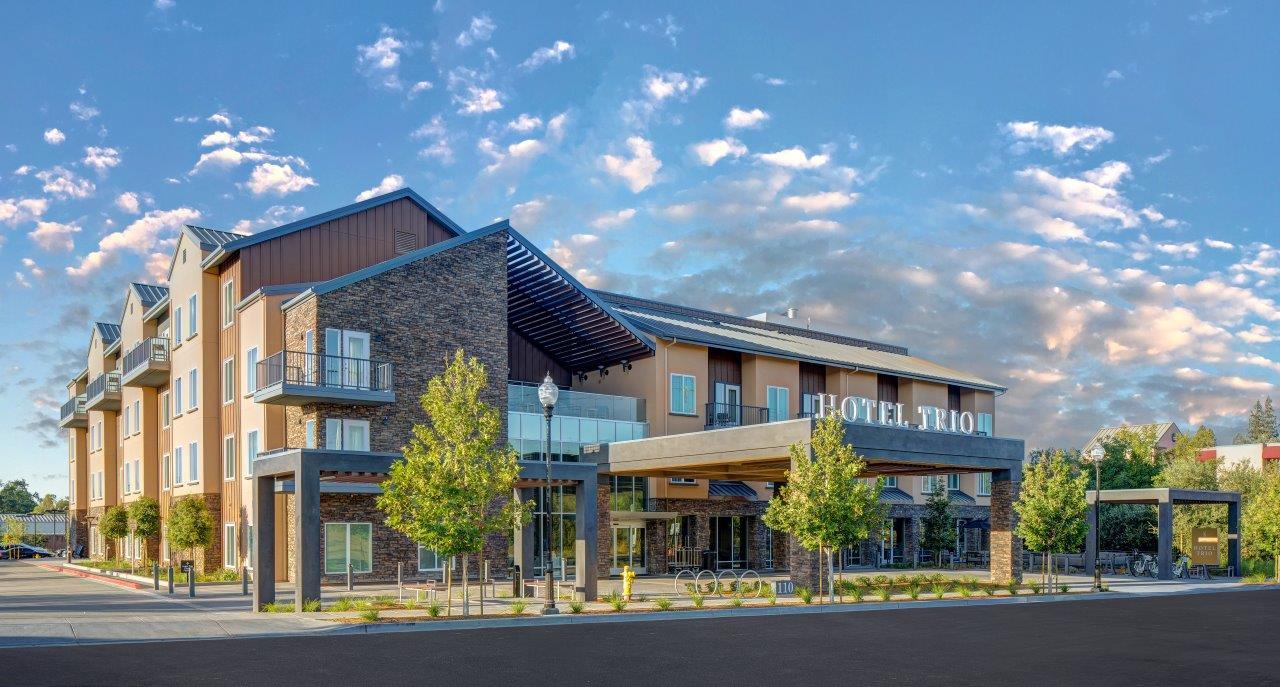
New four-story hotel and adjacent affordable housing community opens in California’s wine country
Irvine, Calif. – R.D. Olson Construction, an award-winning general contracting firm in California, recently marked the completion of a ground-up, two-part construction project in Healdsburg. The project included Hotel Trio, a 122-room hotel, and Citrine Apartments, a 37-unit affordable housing community. Located at 110 Dry Creek Road in the heart of the Sonoma County wine region, the area connects the Dry Creek, Russian River and Alexander wine valleys, giving the hotel its “Trio” name.
The 82,638-square-foot Hotel Trio includes 13 one-bedroom layouts and 109 studios. The hotel offers guests myriad amenities such as in-room kitchens, outdoor patios, firepits, a fully equipped fitness center, outdoor pool deck, wine and coffee bar, lounge, BBQ area, a meeting room and third-floor lounge overlooking Dry Creek. The hotel is walking distance to downtown Healdsburg and a host of local wineries. Guests also can enjoy on-site bicycle rentals and shuttle service, providing convenient access to hundreds of wineries within a 30-mile radius.
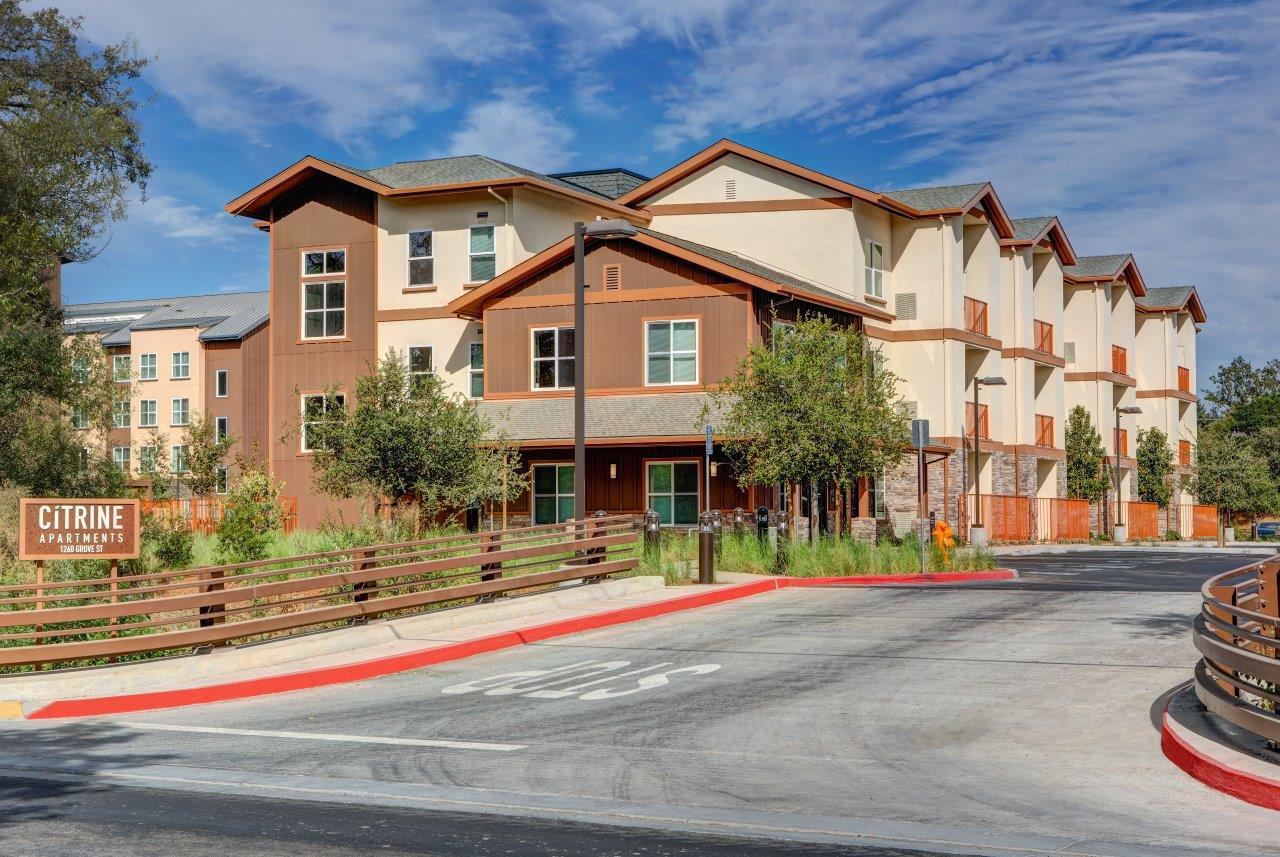
Citrine Apartments, a 41,048-square-foot affordable housing community, is located adjacent to the hotel at 1260 Grove Street. The community offers residents one-, two- and three-bedroom options. Amenities include a bike storage area, playground, outdoor lounge area, laundry facility, community room with Wi-Fi and a BBQ beach area. The development brings a much-needed affordable option for residents in a high-cost-of-living area.
“We are excited to introduce a two-part project to California’s wine country that brings much-anticipated options for affordable accommodation to travelers and area residents alike,” said Bill Wilhelm, president of R.D. Olson Construction. “The combination of a hotel and affordable housing project is a first-of-its-kind for R.D. Olson Construction, and adds to our robust portfolio of hospitality and multi-unit projects.”
Olive Crest Residential Home Kitchen Renovation
R.D. Olson Construction, an award-winning general contracting firm in Irvine, Calif., partnered up with TCA Architects and local subcontractors to renovate nonprofit Olive Crest’s short-term residential therapeutic home in Santa Ana. “Demo day” occurred Saturday, Sept. 1 at 8 a.m.and kicked off the renovation of the 1954 home’s kitchen and living areas. Improvements will include new flooring, appliances, water heater, AC and other amenities to provide a more comfortable environment for the six young women living in the house. Founded in 1973, Olive Crest provides safe, residential facilities to house Orange County youth. R.D. Olson Construction and TCA Architects are donating their time on the project, and most materials and labor are being sponsored through the subcontractor and material supplier community.
R.D. Olson’s relationship with Olive Crest began more than 15 years ago when it took the lead in building a multi-purpose facility for families in Riverside. It has continued to provide support to this deserving nonprofit each year through holiday donations, back-to-school drives and the donation of amenities and supplies for residents to help the nonprofit further its important mission of preventing child abuse, treating and educating at-risk children and preserving families.
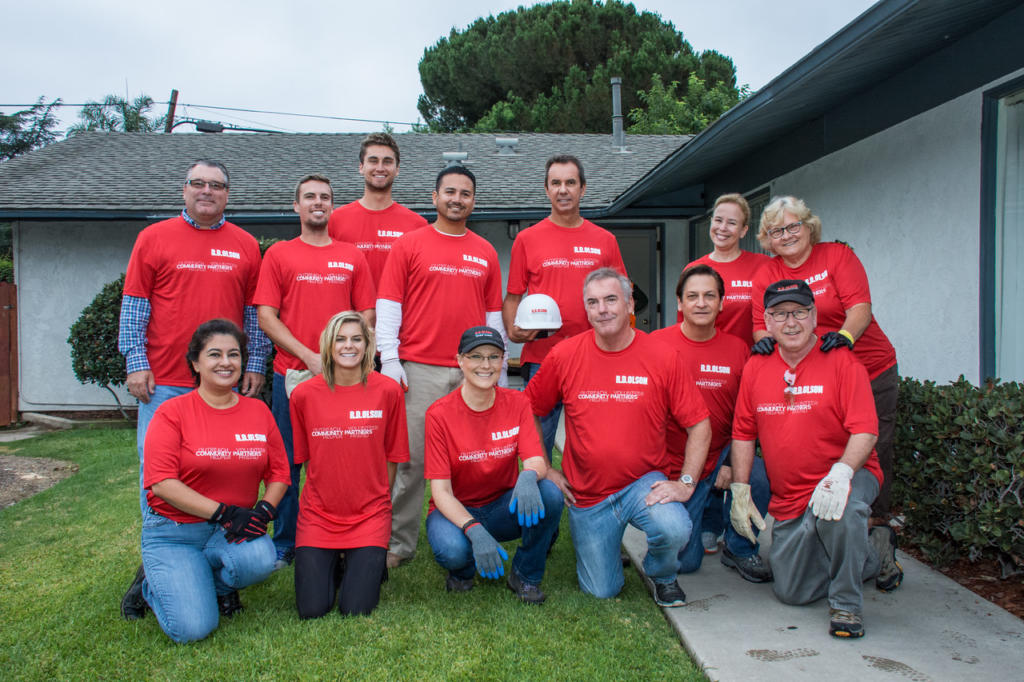
R.D. Olson Construction Named Civic 50 Orange County Honoree for the 2nd Year in a Row
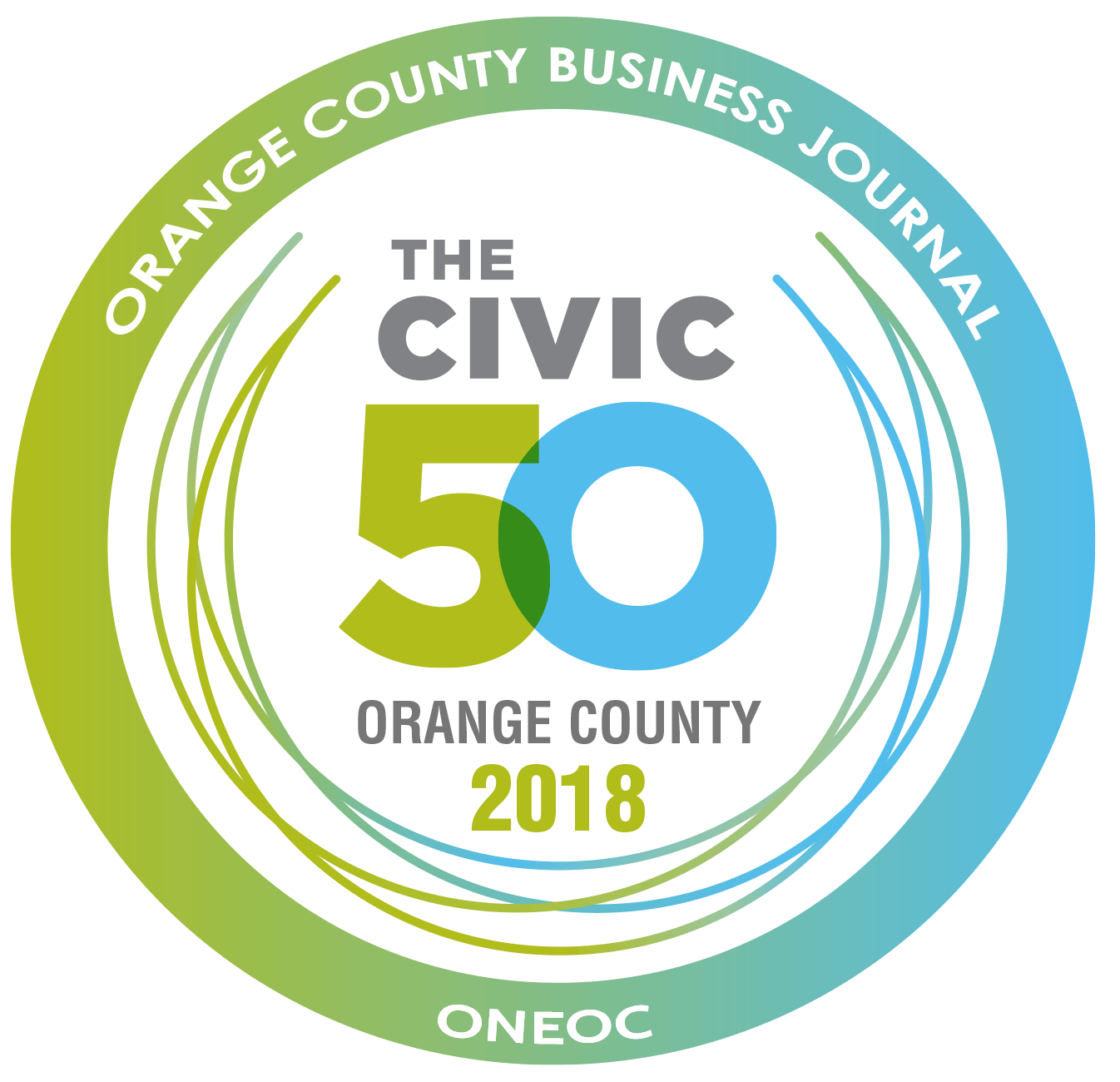 The Orange County Business Journal announces the 50 most community-minded companies in Orange County. The Civic 50 Orange County, presented by the Orange County Business Journal (OCBJ) in partnership with OneOC, provides a local standard for superior corporate citizenship and showcases how companies can use their time, skills and other resources to improve the quality of life in the community where they do business. Since 2012, The Civic 50 has recognized the 50 most community-minded companies in the nation each year as determined by an annual survey developed by True Impact. For Orange County, honorees were determined using True Impact’s adapted national Civic 50 online survey that is independently administered and scored.
The Orange County Business Journal announces the 50 most community-minded companies in Orange County. The Civic 50 Orange County, presented by the Orange County Business Journal (OCBJ) in partnership with OneOC, provides a local standard for superior corporate citizenship and showcases how companies can use their time, skills and other resources to improve the quality of life in the community where they do business. Since 2012, The Civic 50 has recognized the 50 most community-minded companies in the nation each year as determined by an annual survey developed by True Impact. For Orange County, honorees were determined using True Impact’s adapted national Civic 50 online survey that is independently administered and scored.
Companies were selected based upon four dimensions of their community engagement programs: investment, integration, institutionalization and impact. The Civic 50 OC honorees include businesses from three categories: small, medium and large (based on OC workforce). The second annual Civic 50 OC Awards Luncheon will be held October 11, 2018 at the Hotel Irvine featuring keynote speaker Arthur Woods, co-founder of Imperative. All 50 honorees will be recognized at the event, and five awards will be given in the following categories: small, medium and large; emerging; and legacy.
R.D. Olson Construction teams up for a “Demo Day” with Olive Crest
R.D. Olson Construction partnered up with TCA Architects and local subcontractors on September 1st, 2018, to renovate nonprofit Olive Crest’s short-term residential therapeutic home in Santa Ana. Improvements will include new flooring, appliances, water heater, AC and other amenities to provide a more comfortable environment for the six young women living in the house.
[portfolio_slideshow carouselsize=3]
R.D. Olson Construction Breaks Ground on Kings 838 Luxury Apartment Complex in West Hollywood
European-inspired multi-unit property features upscale amenities
Irvine, Calif. – R.D. Olson Construction, an award-winning general contracting firm in California, commenced ground-up construction on Kings 838, a 37,000-square-foot luxury apartment complex located at 838 N. Kings Road in West Hollywood, California. The property is situated in the heart of West Hollywood near Melrose Ave. Shopping District, the Hollywood Improv Comedy Club and the MAK Center for Art and Architecture at the Schindler House.
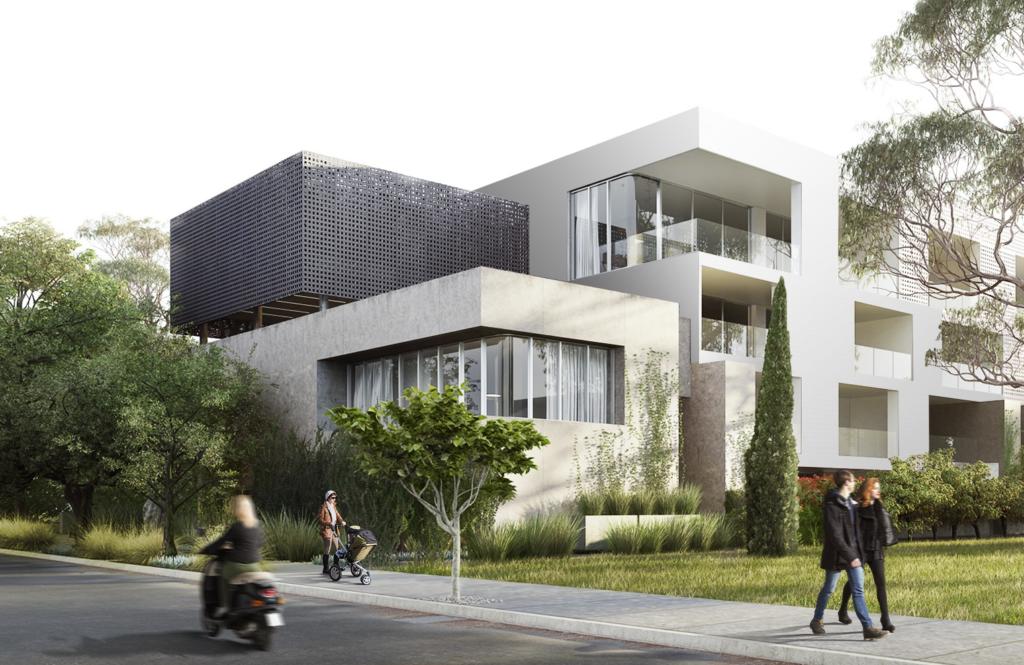
The four-story, multi-unit housing project will include 25 units with one and two-bedroom options as well as below-ground parking. It also will feature myriad luxury amenities, including a car wash and pet wash station, fitness studio, yoga room and a third-floor deck with a pool and outdoor kitchen. The complex will also incorporate a theater designed to host movie premieres and live-streaming events of independent films and film festivals such as Sundance and Cannes.
“Kings 838 is R.D. Olson Construction’s most high-end apartment project to-date and reflects our commitment to being at the forefront of multi-unit building trends,” said Bill Wilhelm, president of R.D. Olson Construction. “We are honored to partner with Darmos Properties to bring a luxury apartment community to West Hollywood equipped with high-end amenities that caters to the local market.”
All apartment units will include walk-in closets, upscale bathrooms with air jet bathtubs from Bain Ultra and European-style kitchens with high-end appliances by Miele. Each unit will be designed with 9 to 11-foot high ceilings, allowing for more space and ample daylight.
R.D. Olson Construction is working with Darmos Properties, Workplays Studio Architecture, Schnackel Engineers, KPFF, Burnett & Young, tk1sc and landscape architecture by Aron Nussbaum Studio on the project. Completion is anticipated for summer 2019.
In addition to Kings 838, R.D. Olson Construction is working on an 81,000-square-foot, 70-unit senior housing project in Los Angeles. Other multi-unit projects include Fullerton Family Housing, a 55-unit affordable housing project in Fullerton and Chapman Student Housing, a 110-unit student housing project in Orange.
R.D. Olson Construction Makes Moves on the Top 400 Contractors List

Irvine, CA – Thanks to our associate’s continued dedication to excellence, we once again were able to make 2018 ENR (Engineering News-Record) Top 400 Contractors List. This award is a great measure of the success R.D. Olson has seen in the last few years and exemplifies the organization’s continuous pursuit of top notch service and quality projects in the hospitality, restaurant, multi-family, retail and entertainment sectors. We charted at #325 up from last year’s #338 position and we know 2019 holds bigger and better things. You can view the complete list of contractors here.
R.D. Olson Construction Completes Historic Renovation of Chapman University’s Reeves Hall
Modernization of the Donna Ford Attallah College of Educational Studies building preserves historic neoclassical style.
Irvine, Calif. – R.D. Olson Construction, an award-winning general contracting firm in California, completed the historic renovation of Reeves Hall at Chapman University. Home to the Donna Ford Attallah College of Educational Studies, it is one of the original five buildings of the former Orange Union High School that make up Chapman’s historic core surrounding Bert Williams Mall. It is located at 333 North Glassell St. in Orange.
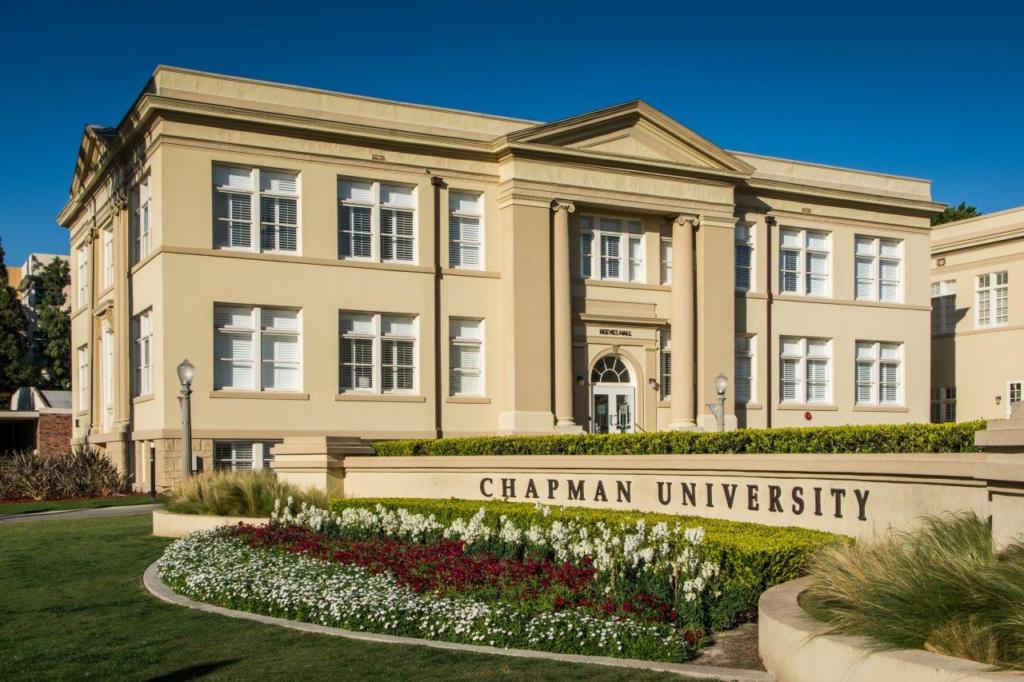
The renovation preserved the building’s historic neoclassical style while incorporating a complete seismic retrofit, new elevator that complies with the American with Disabilities Act (ADA), reengineering of the HVAC system, fire and life safety systems and a general build-out of the offices and classrooms. Interior improvements include new paint, carpet, tile and restrooms and enhanced Wi-Fi. Originally built in 1913, the 17,000-square-foot building includes two stories and a basement.
“Our expertise navigating the intricacies of historical preservation coupled with our roster of higher education projects enabled us to successfully renovate this building for Chapman University,” said Bill Wilhelm, president of R.D. Olson Construction. “We are confident that the modernization will enhance students’ experience and benefit the University’s recruiting efforts.”
Additional elements of the modernization include exposing the original red brick on the interior of the perimeter walls and restoration of existing wood features on the stairwells. The historical integrity of the building remains intact, and it is included in the National Registry for Historical Buildings.
In addition to Reeves Hall, R.D. Olson Construction has completed several other projects for Chapman University, including the Hilbert Museum, Partridge Dance Center and Rinker Health Science Campus. Other higher education projects include California Polytechnic University, Pomona’s Restaurant at Kellogg Ranch and California Baptist University’s James Building.
R.D. Olson Construction partnered with ADAY Architects, P2S Engineering Inc. and ABS Group on this project.
R.D. Olson Construction Breaks Ground on Dual-Brand Marriott Hotel in Marina del Rey
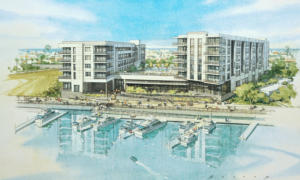 Waterfront Courtyard and Residence Inn slated for summer 2019 completion
Waterfront Courtyard and Residence Inn slated for summer 2019 completion
Irvine, Calif. – R.D. Olson Construction, an award-winning general contracting firm in California, commenced ground-up construction on a waterfront dual-brand hotel by Marriott in Marina del Rey, California. Located on Via Marina and Tahiti Way near world-famous beaches, seaside dining and waterfront activities, the hotel will include a Courtyard and Residence Inn by Marriott overlooking the harbor. The 2-acre property will feature two podium-type buildings with 288 guest rooms in total and is close to Venice Beach, Redondo Beach Pier, Los Angeles International Airport and major freeways.
“We are honored to continue our partnership with MDR Hotels to develop a dual-brand hotel that delivers on the needs of both business travelers and extended-stay guests visiting Marina del Rey,” said Bill Wilhelm, president of R.D. Olson Construction. “This project marks our second dual-brand hotel in Los Angeles County and reflects our track record of helping hotel owners attract a wide variety of guests at various price points.”
The Courtyard by Marriott, a five-story, 159-room building situated on the south side of the project site, will be designed for business travelers. Features and amenities will include free Wi-Fi, in-room desks and flexible work and meeting spaces.
The 129-room, six-story Residence Inn, situated on the north side of the project site, will cater to extended-stay guests. Hotel offerings will include several room options, including large one-bedroom suites and penthouses. All rooms will feature a spacious living room, in-suite work space, wraparound decks that overlook the marina and a fully equipped kitchen to allow guests to feel comfortable and at home during their stay.
The Courtyard and Residence Inn will share a lobby, waterfront restaurant and bar and a second-level outdoor terrace showcasing an expansive view of the marina with a pool, cabanas and fireplace. The property will also include a separate fitness building, more than 72,000-square-feet of subterranean parking and 28-foot-wide pedestrian promenade along the water with a new public dock service.
The dual-brand Marriott hotel will boast a contemporary, coastal-inspired style designed by Redondo Beach interior design firm, KHI Interior Design. R.D. Olson Construction is also working with Awbrey Cook Rogers & McGill Architects + Interiors, DCI Engineers and Fuscoe Engineering on the project. Completion is anticipated for summer 2019.
The Marriott in Marina del Rey bolsters R.D. Olson Construction’s portfolio of dual-brand projects, which includes several new dual-brand properties that are expected to start construction this year. Most recently, the company completed H Hotel, a dual-brand hotel adjacent to Los Angeles International Airport.
Inside Irvine’s First Full Service Hotel in a Decade
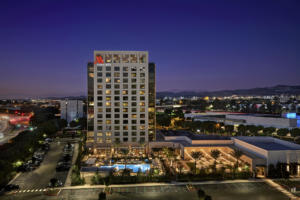 THE NEW $120 MILLION IRVINE SPECTRUM MARRIOTT IS THE FIRST FULL-SERVICE HOTEL TO HIT THE MARKET IN A DECADE, AND DEVELOPER R.D. OLSON SAYS THAT IT FILLS A BIG HOLE IN THE MARKET.
THE NEW $120 MILLION IRVINE SPECTRUM MARRIOTT IS THE FIRST FULL-SERVICE HOTEL TO HIT THE MARKET IN A DECADE, AND DEVELOPER R.D. OLSON SAYS THAT IT FILLS A BIG HOLE IN THE MARKET.
The first full-service hotel in more than a decade has opened in Irvine. R.D. Olson Construction has completed construction of the Irvine Spectrum Marriott, a $120 million 15-story full-service hotel. The project fills a void for high-end product in the market, which is popular for leisure and business travelers. It will specifically target millennial travelers with a host of amenities and food and beverage options.
“Our vision was really to create a hotel that fit in with Irvine Ranch. There is a rich history of Irvine Ranch, which has gone from ranches and farms to universities,” Bob Olson, president of R.D. Olson Development, tells GlobeSt.com. “It has been a great evolution. Our vision was to create a hotel that is reflective of where we are. To be able to reflect that history through the artwork and the design was a lot of fun.”
The absence of full-service hotel development in Irvine says more about economic prosperity than demand, according to Olson. Select-service is more cost effective to build, and as a result, more of that hotel product type has come to market. “To be honest, investors prefer select-service hotels. I though the full-service piece was missing in the market,” explains Olson. “There was not a full service hotel to the extent that it created an opportunity for us. It was really a big hole in the donut, and we stepped up and filled it. We met what the market wanted, and that can be hard to determine. We found that a lot of travelers in this market were not staying in the area because there wasn’t high enough lodging, and that was especially true for business customers.”
The developer felt the demand justified the project. Since, the market has seen healthy growth, especially in the office sector, inflating the need for full-service hotel. “We pulled the trigger on this project three years ago, and at the time, the economy was healthy, but growing at a sluggish pace,” says Olson. “There wasn’t the confidence then that you see today in the hotel market, but we felt confident in the Irvine Spectrum market. We thought that long-term, it was a great place to do business, and today, it really is becoming the business center of Orange County. I think that this will emerge as one of the leading business centers in Southern California.”
While there were some pessimists about the project, Olson says that the positive traction has already proven the success of the hotel. “Our customers love the hotel. Guests are going to run into both locals and travelers on the rooftop bar,” he says. There is a great pulling together and a sense of place.”
The developer plans to hold the property for the long term.
Building Relationships and Communities
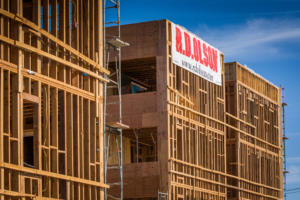 A California-based developer exceeds expectations when it comes to affordable housing
A California-based developer exceeds expectations when it comes to affordable housing
By focusing on forming strong relationships with clients, developers and the communities in which it works, R.D. Olson Construction has achieved success in more ways than one.
With a range of new efforts in the affordable housing space, the firm seeks to make an impact for limited-income residents while cultivating a close-knit company culture.
According to President Bill Wilhelm, the success of R.D. Olson is due largely to its commitment to these relationships.
“We are after growth, but we’re after growth in relationships and partnerships with our existing company base and our new future customer base,” Wilhelm says. “We are not out chasing a number. We know that our financial growth will [increase] with our success with partners and customers.”
Wilhelm has been part of the R.D. Olson team since 1994. Over the years, he has witnessed the company move from a somewhat small general contractor to one of the industry leaders in ground-up and renovation construction.
Pursuing loyalty
R.D. Olson focuses on serving the needs of its existing customer base above all else. Returning business makes up about two-thirds of its current portfolio, and Wilhelm hopes that this figure will continue to grow in the coming years.
“Part of our short- and long-term goal is to increase the repeat business,” Wilhelm says. “About 70 percent of our volume is repeat business, and that tells you what kind of company we have. It’s one that truly is focused on quality over quantity. When you have that kind of approach, success is always right in front of you.”
R.D. Olson has participated in the development of projects ranging from restaurants to hotels. More recently, it has branched out into affordable housing. One of its recent efforts, the Village at Calabasas, added 180 units of housing to a community in southern California. The property was completed in 2016.
Fullerton Family Housing in Orange County is now under construction and, upon its completion in spring of 2018, will offer 55 units of affordable housing. The site itself is compact, requiring some creativity to make the most of the development.
“It’s almost like putting a property on a postage stamp,” Wilhelm says. “We are maxing out this site with open space, including decks, walkways and things of that nature.”
Despite the limited space for construction, development at Fullerton Family Housing is taking place with careful attention to architecture and aesthetics.
“The rooms are very spacious,” Wilhelm says. “Sometimes, you get the wrong impression when you hear the words ‘affordable housing.’ These are nice units. They’re spacious, and the finishes are definitely above the standard in the industry. It’s just a great property.”
R.D. Olson has a time-lapse construction camera accessible through its website, allowing members of the public to see progress in real time.
“Our customer base loves it, our people love it and even our community loves that they can watch their community grow,” Wilhelm says. “We get a lot of feedback about how powerful that webcam is on our job sites.”
As for the community in Fullerton, Wilhelm says that the reception of the new development has been overwhelmingly positive. R.D. Olson’s focus on building relationships within the community has led to a strong reputation for the firm.
“From what I can see, I think that the community has welcomed it with open arms,” Wilhelm says. “[Opposition] is just a part of revitalization, but the city has worked with the design team very closely on the aesthetics of the building and the general appearance so that it will blend in well with the city of Fullerton.”
R.D. Olson’s commitment to delivering exceptional products remains at the forefront of this new affordable housing development.
“If we’re going to do it, let’s do it right,” Wilhelm says. “Let’s beautify it and let’s make it feel like it is a true part of our community.”
Investing in people
Achieving success over the course of nearly four decades has required a level of commitment to clients and employees alike. In the coming years, Wilhelm says R.D. Olson will continue to invest in its employees, giving them opportunities to take on leadership roles within the company.
“We are looking at our next generation of leaders,” Wilhelm says. “The last few years, we have been continuing to build within the ranks. We know sustainability is not just about having backlog, but also having tenured employees.”
Having an engaged workforce gives R.D. Olson an edge over its competitors and demonstrates its commitment to people.
“I can walk into a presentation and talk about our people and the length of time and experience they have, and typically that gives me a little bit of an advantage over a competitor that I might be up against in this industry,” Wilhelm says. “Our people are the greatest assets that our company has.”
Olson Construction Seeks Boost in Multiunit Projects
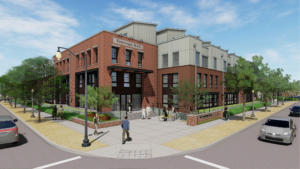 Move Meant to Diversify Mix, Retain Talent
Move Meant to Diversify Mix, Retain Talent
R.D. Olson Construction Inc. has made recent inroads in multiunit contract building and said it will maintain or slightly expand its work in that market as it continues a diversification drive of the past five years in a slowing hotel construction market.
The Irvine-based sister firm to hotel owner-developer R.D. Olson Development Inc. in Newport Beach is largely known as a hospitality construction company.
The Business Journal OC 500’s Bob Olson owns both, and the former builds for the latter. R.D. Olson Construction built the Marriott Irvine Spectrum, which opened in March, and the boutique Lido House in Newport Beach, which opens in May.
Last year it was No. 13 on the Business Journal’s list of commercial construction companies, down two notches, with $218 million in revenue, down 6%.
Partner and President Bill Wilhelm, who also owns a stake in the company, said it’s now at about $225 million in annual revenue – two-thirds from hotels.
About 30% is from multiunit projects, up from 20% in recent years; 97% of multiunit work is affordable housing, student housing and timeshares. and there’s a sliver of market-rate, or standard-priced work. Wilhelm wants more mixed-use apartment projects-rental living that includes retail-and to get back to assisted living.
About 5% is from construction of educational campus buildings, which Wilhelm began to increase his focus on about three years ago.
Social Calendar
He aims for 35% of revenue from multiunit construction and 8% from the education work.
If the remix plays out, R.D. Olson Construction’s reliance on hotel construction will drop from 75% of business a few years ago to 57% a few years from now.
All of Olson’s multiunit work is for-rent product, which bears a striking resemblance to hotels when considered as ultra-short-term rentals-as short as one night.
The hotel business, including construction-Olson’s bread and butter-had a five year boom that began a few years after the 2008 recession.
Olson benefitted building, for instance, the Pasea Hotel & Spa in Huntington Beach, an R.D. Olson Development project that opened in 2016. Olson Construction’s 2017 revenue of $218 million was twice its annual take as of June 2012, when it was No. 16 on our construction list as $98 million-up 51% year-over-year.
Hotel construction is said to be cooling.
People attending the Americas Lodging Investment Summit, produced each January in downtown Los Angeles by Costa Mesa-based Burba Hotel Network LLC, over the past two years have discussed a market peak over all, a subsequent shaking out in some markets, and which “secondary markets” should now get attention.
Luxe Rental
Orange County still looks strong for hotel construction, according to recent data of consultant and broker Atlas Hospitality Group in Irvine. Market research by L.A.-based CBRE Hotels shows annual boosts of 5.8% in average daily rate, 8.6% in revenue per available room, and 2.6% in occupancy, as of February.
But Olson also builds outside of OC. Wilhelm said its history runs as far east as Atlanta and his vision extends beyond the county’s environs with that continued focus on for-rent product.
He means that in a good way.
“With the cost of housing, people are leaving single-family homes and going multifamily,” he said.
Empty-nesters cashing out and downsizing or millennial who can’t afford to buy-both still want stylish stuff.
Affordable housing in OC is going to be nicer than your average bear cave, and other pieces of the multiunit puzzle also skew higher-end.
Students typically pay above-market rates for rooms, for instance, and healthcare facility owners, such as assisted-living projects, have pushed into properties where residents pay out-of-pocket instead of through Medicare.
Locals involved in those markets include Ladera Ranch-based real estate investment trust Strategic Student & Senior Housing Trust Inc., which has raised about $82 million of a planned $1.1 billion to buy property. Nelson Brothers Professional Real Estate LLC invests in student and senior housing.
Local healthcare facility REITS are to one degree or another looking to private-pay tenants at properties they own.
HCP Inc. has strongly de-emphasized Medicare-related facilities, Sabra Health Care REIT Inc. less so; both are in Irvine.
The Dance
Olson Construction is consequently looking to fill its dance card in workers, colleagues and clients.
It hired Cynthia Cook as business development director six months ago to make it rain on both multiunit deals and education construction.
It strutted its stuff a bit with the renovation of space in old-town Orange across from the train station for the home of the Hilbert Museum, a Chapman University art gallery.
Olson hasn’t gotten a lot of revenue from the education pivot yet, but “we’re enhancing relationships, and prospects are improving,” Wilhelm said.
Cook’s hire highlights an intriguing element of the multiunit effort-the need to attract and keep staff.
Our 2017 construction company list showed a 13% jump in Olson’s employee count to 123. Wilhelm has to hold those workers in a tight labor market and fill gaps as others retire.
“You need a pipeline to grow and retain talent,” he said.
In colleagues and clients, it looks in part to hospitality “project partners” as “excellent referral sources” for new work.
It’s building 110-unit student housing project Santiago Hall for Chapman that’s scheduled to open in the summer of 2019 and 55-unit affordable-housing apartment deal Citrea in Fullerton near the train station and downtown that’s scheduled to open in June.
The developer on the latter is Related California in Irvine, led by the OC 500’s William Witte; the designer is IDS Group Inc. in Irvine.
R.D. Olson Construction Completes Renovation in Downtown Los Angeles, West Coast’s First NoMad Hotel

Irvine-based general contractor restores details from historic Bank of Italy building to reawaken neoclassical flair
Los Angeles, Calif. – R.D. Olson Construction, an award-winning general contracting firm in California, has completed one of Los Angeles’ most anticipated renovations: the long-awaited conversion of the historic Bank of Italy Building into a world-class hotel, bar and restaurant.
Located at 649 S. Olive Street, the NoMad Los Angeles features 241 rooms, a rooftop pool and lounge and 10,000 square feet of meeting and event space. Dining options include a casual restaurant and bar in the lobby, an Italian-inspired café and a formal dining room, all led by Michelin-recognized executive chef Daniel Humm and internationally acclaimed restaurateur Will Guidara. The duo is also behind the dining options at the original NoMad Hotel in New York City and Manhattan’s Eleven Madison Park, currently ranked first on the “World’s 50 Best” restaurants list.
New York-based Sydell Group handpicked the 93-year-old structure as its first West Coast location for the popular NoMad Hotel and restaurant. The neoclassical building, adorned with an ornate Venetian plaster gilded ceiling, marble touches and maple wood flooring, were given new life as the second NoMad Hotel. The décor reflects the original Beaux Arts destination in Manhattan, but echoes many of the building’s distinct and historical ties to early LA.
During the renovation, R.D. Olson Construction was careful to match the original materials used in the Bank of Italy building – marble, terracotta and wood – to maintain its historic integrity. The Los Angeles Conservancy, a historic preservation organization, provided guidance throughout the restoration process. Project architecture was managed by LA-based Killefer Flammang, with interior design by Paris-based Studio Jacques Garcia.
“The team at R.D. Olson Construction was able to apply our world-class experience with historical renovations and adaptive re-use with this project,” said Bill Wilhelm, president of R.D. Olson Construction. “We brought the client’s vision to life by creating a destination that respects the stately interior of the building’s original design and pays tribute to its historical roots.”
A large, 100,000-pound vault door – a remnant from the building’s early days as a bank – was refurbished and incorporated into the overall design of the ground-floor common areas. Ornate and stately bronze doors at the main entrance were also fully restored, along with the main elevator lobby and the building’s local cast-iron railings.
“We very much enjoyed partnering with R.D. Olson on the project and greatly benefited from their attention to detail, which allowed us to achieve an exceptional restoration of all the important original design details of the historic building,” said Andrew Zobler, founder and CEO of the Sydell Group.
R.D. Olson Construction has a long history of hotel re-use and renovation in the LA area, including the transformation of a six-story 1950s medical office building into the LEED Silver Hotel Wilshire in Los Angeles, and adaptive reuse of a 1960s office building into the dual-brand H Hotel near Los Angeles International Airport.
Is El Segundo L.A.’s Newest Hot Hotel Market?
With the Hollywood Stadium project and LAX nearby and a wealth of new office projects filling up, El Segundo is starting to attract more hotel developments.
El Segundo may be L.A.’s newest hot hotel market. R.D. Olson Construction has broken ground on AC Hotel by Marriott, a 98,728-square-foot, 180-room hotel in El Segundo, and says that the market is benefitting from tremendous office activity and nearby entertainment projects that bring a dynamic hotel demand to the market. The Lakers training facility is based in El Segundo, the Hollywood Park stadium development in Inglewood and the Los Angeles International airport are all helping to drive activity for more hotel projects in El Segundo.
“El Segundo is a tight-knit business community, almost like a sleeper community but it is very vibrant when you pull back the covers a little bit. They have done an incredible job on the business side, and now you see the hospitality industry meeting El Segundo’s needs,” Bill Wilhelm, president of R.D. Olson Construction, tells GlobeSt.com. “El Segundo is the corporate center of Southwest L.A., and there is a need for hospitality. There are a few hotels, but you haven’t seen new development of hotels like you have in other cities. There are so many great assets that El Segundo can fill needs, and I think that the hospitality market there will continue to grow.”
The growth in the surrounding market incentivized the new Marriott development, and Olson expects that there will be more to come. Not only do the entertainment projects ensure weekend demand, but the office growth in El Segundo will provide weekday demand. “Any primary location for a hotel, you have to look at the theater and the seven-day window,” Wilhelm explains. “We have a number of business users that can fill spaces during the week, and then on the weekend, you are going to have the athletic family that is traveling, whether is college or professional. The positive side to El Segundo is it puts you right where all of the activities are at. It has a tremendous amount of opportunities across many segments.”
While hotel activity is on the rise in El Segundo, the market isn’t without competition. There are plenty of hotel options in surrounding markets, and Olson says that it may be difficult to push rates in 2018. “One of the challenges that El Segundo has is that it neighbors LAX and Redondo Beach, so there is a lot of hospitality projects surrounding the El Segundo market,” says Wilhelm. “It is tough because there have been so many new rooms in the South Bay market. The area has seen so many new keys. You also have so many existing keys where properties have needed to ‘keep-up-with-the-joneses.’ We have been into a number of existing properties and done a number of renovations to keep them current. As a result, rates have capped, and now it is a matter of who has the better product and how you can make adjustments to increase occupancy. Competition is going to be tough for the next year in that area.”
AC Hotel by Marriott has broken ground and will open in 2019.
Adaptive Reuse: A Growing Trend in High-Density Markets
Adaptive reuse refers to the redevelopment or use of an old site or building for a purpose other than what it was originally built or designed for. The demand for adaptive reuse projects has increased significantly in the last few years, becoming more prevalent for hotel construction projects in high-density, urban areas. A majority of our company’s projects are now adaptive re-use or large-scale renovations – a significant shift from just a few years ago when ground-up construction was more widespread. In addition to solving for a lack of land supply for new construction, adaptive reuse offers a wide range of benefits for hotel owners, developers and the local community.
Historical Integrity
With highly commoditized hotel chains saturating the market, hotel developers want to provide travelers with a personalized experience by offering accommodation that reflects the history, culture and texture of the surrounding city. Adaptive reuse gives hotel developments a competitive advantage by transforming abandoned or underutilized structures into a creative space. This is done by refurbishing existing materials, designs and finishings that preserve the building’s historical integrity. Building on existing structures in leu of demolition allows developers to preserve any historical or cultural ties the community may have to a building.
Economics
From an economic standpoint, adaptive reuse is more cost-efficient because it reduces the price of materials and construction equipment. In addition, adaptive reuse projects have shorter timelines that allow hotel developers and builders to be nimbler when adjusting to new trends and any unforeseen shifts in supply and demand levels. The flexibility allows hotel developments to go to market much faster, meaning heads on beds and the hotel can be profitable much more quickly. Additionally, adaptive reuse can help reduce urban sprawl by revitalizing existing neighborhoods and encouraging upgrades to other structures and buildings in the surrounding area – providing economic benefits for the entire area.
Sustainability
In almost all cases, adaptive reuse is more environmentally friendly than ground-up construction. Adaptive reuse projects have lower energy consumption and exert less pollution, which is often caused by the demolition of an existing structure, the additional machinery required and the transportation of raw materials. Furthermore, adaptive reuse protects the local environment by generating less waste in the surrounding neighborhoods.
Challenges
While adaptive reuse offers a host of benefits, it also comes with its unique challenges. Oftentimes, unforeseen features that conflict with the planned project layout are the biggest obstacle. For example, when converting a 1960s office building in Los Angeles into a dual-brand hotel near the Los Angeles International Airport (LAX), now known as the H Hotel, our team was surprised to find a walk-in vault buried behind the walls. Located dead-center on the first floor of the building, the vault overlapped a planned retail restaurant and unfortunately had to be removed, which isn’t a simple feat.
Additionally, we came across a backup transformer for the nearby airport, which was required to remain a part of the property. As a result, we coordinated a shutdown of backup emergency generators at LAX in order to update the transformer to meet electrical and safety requirements and worked with The Los Angeles Department for Work and Pensions to navigate additional requirements. Despite these challenges, we successfully completed the 12-story, 260,000-square-foot adaptive reuse project at a much lower budget than if it had been a ground-up project.
Adaptive reuse projects often are a necessity in high-demand, high-density areas, but they also offer many economic, environmental and social benefits for hotel owners, developers and the local community. As there continues to be less available land for new construction, adaptive reuse hotel projects will only become more prevalent.
4 Ways to Ensure Safety on the Jobsite
Job site safety should be the number one priority for any construction company. It’s the right thing to do, it helps improve morale and it keeps construction projects on schedule and under budget.
These four tips can help make your next construction site safer:
Plan ahead
Long before a job starts, extensive planning should be done to identify which tasks will be taking place onsite and how best to plan for potential safety hazards. Project managers and field representatives should put preventative measures in place and communicate them to workers, and provide the appropriate tools and equipment.
Zoning, which involves blocking off areas where certain tasks are taking place, installing catch platforms, nets and other safety measures, is an important part of this planning phase. By allowing only those working on a task within the zoned area past the barrier, it helps to prevent bystander injury. This methodical process also helps ensure that workers within the zoned area have the right protective equipment and tools for that specific job.
One-third of all construction fatalities are a result of falls — from buildings, structural elements and ladders — making them one of the most critical safety issues for which to plan. Appropriate scaffolding needs to be installed, holes in the structure need to be cordoned off or otherwise managed, and other potential fall hazards should be planned for before construction begins.
Transportation incidents are the second most common issue, with vehicle contact/collision accounting for 29% of fatalities.
Manage the risk
Less obvious factors proven to cause safety issues should always be considered when developing and implementing a safety plan. According to a study commissioned by the Associated General Contractors of America (AGC), most deaths on construction sites occur between 10 a.m. and 3 p.m., with fatalities peaking around noon. Almost 75% of fatalities happen on Mondays through Thursdays, with industrial projects reporting more incidents than residential, commercial and other project types. What does this mean for you?
Consider scheduling safety meetings around noon during the beginning of the week, and make sure there is a strong protocol for safety during lunch breaks. If you are working on an industrial site, encourage frequent safety meetings and perhaps more stringent safety protocol that accounts for the dangers unique to industrial building.
The AGC report also shows that small construction companies with one to nine employees account for a much higher fatality rate (26 per 100,000 workers annually) than larger firms. If you are at a smaller company, don’t make safety planning any less of a priority.
There is also a strong correlation between fatalities and the summer months, and deaths are also more common in the South than other areas of the country. This may be due to heat-related illness and exhaustion. Make sure workers have adequate access to water, encourage them to take regular breaks and train them to monitor for heat-related issues.
Scheduling and staffing
Another overlooked but pressing safety issue is worker exhaustion. The industry-wide talent shortage can make it difficult to appropriately staff jobsites, leading some companies to over-schedule workers in order to meet demanding construction schedules. But no matter how many preventative measures and education programs you put in place, it’s all for nothing if workers are too physically or mentally worn out to follow protocol.
The Occupational Safety and Health Administration (OSHA) reports that accidents and injury rates are 30% greater during night shifts, and working 12 hours per day comes with a 37% increased risk of injury. Safety isn’t just a concern on jobsites, though.
Decreased alertness resulting from fatigue has been cited as a contributing factor in major workplace disasters, such as BP’s Deepwater Horizon oil refinery explosion, the Challenger space shuttle explosion and the nuclear accidents at Chernobyl and Three Mile Island. Don’t put your construction site at risk for disaster just to shave a few days or weeks off the construction schedule
.
Extended shifts can be correlated with an increased risk of having a car accident on the way home from work by 16.2%. They can also lead to a higher probability of developing health problems due to prolonged exposure to chemical and noise hazards.
Companies can help prevent worker exhaustion, and improve retention, by limiting extended shifts, ensuring employees and subcontractors aren’t working too many hours and taking possible talent shortages into account when creating the project schedule.
Safety as a culture
For a safety program to be successful, safety needs to be integral to a company’s culture. Education is one way to instill this. OSHA’s 30-hour Construction Training Course is one example of a valuable program that ensures every worker has the same comprehensive knowledge that can be built upon during company trainings.
While the OSHA program is geared toward safety directors, foremen and field supervisors, it is ideal if everyone in the company goes through the training to make sure the takeaways are spread across every level of the organization. Trainings shouldn’t be relegated only to management and employees. It’s best if subcontractors and other partners also receive trainings, ensuring their safety standards are in line with a GC’s own.
Regular safety events, onsite and off, that teach workers about the latest regulations and give refreshers about existing ones are also critical to promoting a culture of safety. They can range from brief onsite recaps to fun team-building exercises. Regardless of the format, they typically should be done at least weekly to make safety part of workers’ daily mindsets.
Planning, risk management, staffing and education are all important components of keeping job sites safe. As an industry, we owe it to our workers to prioritize safety and give them all the tools necessary to prevent incidents before they occur.
Scoring Newport Beach Bingo
Luxury homes are hot in the ritzy Orange County enclave, but experts urge sellers to exercise caution.
“…Meanwhile, on the commercial side, proposed projects are moving along, helped in part by the activity in the residential market.
National general contracting and construction management firm R.D. Olson Construction, based in Irvine, is building the luxury Lido House Hotel in Newport Beach. The hotel, on the site of the former City Hall, is part of Marriott International’s Autograph brand.
Slated to open in the spring of 2018, the 103,000-square-foot, four-story, 130-room hotel is located close to the Lido Marina Village, a shopping and entertainment center, which itself underwent a renovation last year. Developed by DJM Capital Partners, the 116,000-square-foot retail, dining and creative office project now houses trendy eateries such as Nobu and fashion brands such as Elyse Walker and Warby Parker in addition to a 47-slip marina. “
Adaptive Re-Use Emerges as Hotel Sector’s Hedge Against Risk
 The hotel sector in Southern California is booming. Los Angeles County set a record for drawing tourists last year, hosting nearly 50 million visitors in 2017. That was a 2.2% increase over the record 47.3 million tourists in 2016.
The hotel sector in Southern California is booming. Los Angeles County set a record for drawing tourists last year, hosting nearly 50 million visitors in 2017. That was a 2.2% increase over the record 47.3 million tourists in 2016.
To gain a better understanding of trends shaping the industry, Connect Media asked Bill Wilhelm, President of Irvine, CA-based R.D. Olson Construction, to share insights. The company recently completed the dual-brand H Hotel at LAX, which is part of Hilton’s Curio Collection and Homewood Suites in Los Angeles.
Q: Why has adaptive re-use become more prevalent than new construction in the hotel industry?
A: In the past few years, there has been an increase in demand for adaptive re-use projects over ground-up construction in high-density areas with limited space available for new construction. At R.D. Olson Construction, about 60% of our projects are now in adaptive re-use and large-scale renovations, largely because many of our projects are in the high-demand Southern California market.
In an industry of highly commoditized hotel chains, adaptive re-use gives hotel developments a competitive advantage through the unique character and creative use of space that differentiates these types of buildings. Second, adaptive re-use is more cost-efficient, reducing the price of materials and construction equipment. Furthermore, having an existing structure to build upon makes adaptive re-use a speedier process, allowing hotels to go to market much faster.
Q: In the current economic climate, is adaptive re-use a good hedge against a potential downturn?
A: Yes, adaptive re-use is a good hedge because it allows for much shorter timelines, which reduces the risk that a recession or other economic downturn will happen mid-project and allows the hotel to start becoming profitable faster by getting guests in the door sooner. It also allows for more flexibility to adapt to new trends and changes in supply and demand levels. A smaller investment is required for adaptive re-use, which also is appealing in the case of a downturn.
Q: Are there non-economic benefits to adaptive re-use as well?
A: More than economic gain, adaptive re-use offers social and environmental benefits. Adapting old structures for new purposes allows developers to preserve any cultural and historical significance a site has for the surrounding community. In addition, adaptive re-use projects reduce energy consumption typically caused by demolition, additional machinery and the use and transportation of raw materials. Overall, the energy output for adaptive re-use is much less than ground-up construction.
The Most Anticipated Hotel Openings of 2018
 As 2017 comes to a close and we look forward to the year ahead, jet-setters have plenty to be excited about when it comes to new hotels. There will be a lodge in a Rwandan national park perfectly situated for observing primates in their natural habitat; a luxurious retreat with direct access to a highly Instagrammable geothermal spa; and even a historic village that has been relocated and reassembled brick by brick in the hopes of conservation. Many of these properties are destinations in themselves, some might introduce you to a new neighborhood in one of your favorite cities, while others will bring you to far-flung locales waiting to be explored. As you plan your travels for 2018, here are 14 of the most anticipated openings we’re keeping an eye on next year.
As 2017 comes to a close and we look forward to the year ahead, jet-setters have plenty to be excited about when it comes to new hotels. There will be a lodge in a Rwandan national park perfectly situated for observing primates in their natural habitat; a luxurious retreat with direct access to a highly Instagrammable geothermal spa; and even a historic village that has been relocated and reassembled brick by brick in the hopes of conservation. Many of these properties are destinations in themselves, some might introduce you to a new neighborhood in one of your favorite cities, while others will bring you to far-flung locales waiting to be explored. As you plan your travels for 2018, here are 14 of the most anticipated openings we’re keeping an eye on next year.
2. NoMad Los Angeles
Downtown Los Angeles is going through a resurgence and the arrival of the new NoMad is only further proof of its comeback. The flagship property, along with its stellar restaurant, has long been favored by New Yorkers (it was even chosen by Beyoncé for her Soul Train–theme birthday party last year), which will make this second outpost particularly special for bicoastal travelers. Arriving late January, NoMad Los Angeles is taking over Giannini Place, a building originally built in the 1920s that served as the Bank of Italy’s headquarters. Aspects of its Neoclassical construction have been preserved and the hotel’s 241 rooms will pull inspiration from the carefully restored gold and blue Italianate lobby ceiling while still maintaining the Parisian flare we’ve come to know and love. The food and beverage program will be overseen by chef Daniel Humm (of acclaimed Eleven Madison Park) and restaurateur Will Guidara and will include an Italy-inspired café, but the rooftop, with its alfresco dining space, cocktail bar, and pool, will surely be an instant hit.
R.D. Olson Brings Dual-Branded H Hotel To The Los Angeles Airport
 When converting the property the developers came across a vault that had to be removed, as it overlapped with the hotel’s planned layout.
When converting the property the developers came across a vault that had to be removed, as it overlapped with the hotel’s planned layout.
When it comes to hotel conversions, nothing offers up surprises like a concrete office building from the 1960s. When R.D. Olson Construction cracked into what would eventually become the H Hotel, Curio Collection by Hilton and Homewood Suites in Los Angeles, company president Bill Wilhelm didn’t expect to find a backup transformer for the nearby Los Angeles International Airport, as well as a walk-in vault buried behind a number of walls.
Wilhelm said such “features” were unexpected, yet not too uncommon in the world of adaptive reuse. When the building’s owner, Sea View Investors, partnered with R.D. Olson to build a dual-branded Curio/Homewood Suites by Hilton combo out of a leftover building at the LAX airport, Wilhelm took one look at the property’s documentation and boiled it down to one word: Vague.
“It looked like a prison building,” he said. “It had concrete fiberglass fins on the outside. It wasn’t that attractive. We learned a long time ago the best thing to do in instances such as these would be to take the interior all the way down to the structural bones. The mechanical systems may have some life left in them, but you may be better off tearing it all out. So we did.”
R.D. Olson determined that the exterior of the building was good enough to keep, but updated it to modern aesthetic standards. Roughly $60 million was spent on converting the property into a dual-branded hotel. Unfortunately, Wilhelm said the building’s hidden vault had to go.
“We hate to tear apart something with a great story, and of course it’s quite costly because these things are built like Fort Knox, but location made the difference,” Wilhem said. “We talked about keeping the vault because it was impressive. Unfortunately it was dead center on the first floor and conflicted with a planned retail restaurant. There was no way to lay out around it.”
“Both fitness centers are impressive, but the Curio is over the top,” Wilhem said. “It’s located on the 12th floor, it overlooks the LAX runways and when you’re on a treadmill it feels like you are running down the landing strip. Homewood’s fitness center is more internal, and overall it’s a different presentation.”
Unlike the vault, the aforementioned LAX transformer was forced to stay on property. Wilhelm said developers were forced to work with the Los Angeles Department for Work and Pensions—as well as a coordinated shutdown of backup emergency generators at LAX during certain periods of development—partly to update the transformer to meet current safety and electrical standards. However, Wilhelm said these are typical aspects of an adaptive reuse such as this, particularly one located near an airport. The biggest challenge facing developers today, he said, lies with subcontractor resources.
“It’s an industrywide challenge,” Wilhelm said. “Developers need strong relationships. We counted our lucky stars on this one because we had strong relationships, which made it easier than it could have been. Another challenge is city agencies, as they are all understaffed. They are doing a good job keeping up with the number of products going up in Los Angeles, but it’s taxing these systems.”
For the future of the LAX development market, Wilhelm said there are still opportunities for future growth, almost exclusively in adaptive-reuse projects. Like many developers in the industry, he has concerns about oversupply, and he cautions against overbuilding in a market that may not be able to sustain it.
“In the short term, we have to be careful due to how supply and demand is playing out,” he said. “The airport is spending billions on growing its infrastructure and terminals, and the Olympics is coming to Los Angeles in eight years. That may seem like a long time, but it will take a lot of effort and planning. We have to be careful, and we have to reinvest in our communities to keep opportunities close to home and make these developments sustainable.”
Adaptive Re-use Dominates Hotel Builds
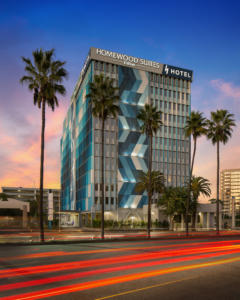 Adaptive re-use is starting to dominate hotel development. In the last year-and-a-half, R.D. Olson Construction says that the majority of its hotel projects have been major redevelopments or adaptive reuse projects. The construction company recently completed an adaptive re-use hotel project near LAX, converting a dilapidated office building into a dual-branded hotel.
Adaptive re-use is starting to dominate hotel development. In the last year-and-a-half, R.D. Olson Construction says that the majority of its hotel projects have been major redevelopments or adaptive reuse projects. The construction company recently completed an adaptive re-use hotel project near LAX, converting a dilapidated office building into a dual-branded hotel.
“In the last three to five years, there has been a greater need for additional hotel rooms,” Bill Wilhelm, president of R.D. Olson Construction, tells GlobeSt.com. “So, there has been a lot of activity and a lot of hotel renovations. About 60% of our construction volume is in hospitality, and in the last year-and-a-half, we have seen a tremendous swing going from ground-up to adaptive reuse and major renovations. Before, we were running about 55% new, and now we have flipped it to where we are doing about 58% in adaptive reuse and the balance is in new construction.”
It makes sense that adaptive re-use has become popular for hotel projects. They are less expensive than ground-up construction and reserve character. Most importantly, however, they are much faster to build. “When you have an adaptive reuse opportunity, there are a lot of positives,” says Wilhelm. “One is the speed at which you can get a project up and running to where you have heads on beds, as we call it in the hotel industry. Two, when you look at the overall cost of construction for replacement cost, typically, you can find yourself a building that has a lot of character that you can use. It is more economical than doing ground-up construction.”
Adaptive re-use also helps to hedge against a potential downturn. Because the hotel is profitable more quickly, it can be a good tool for developers looking to get off the ground. “A lot of hotel developers and owners understand the demand, and it has become all about speed and how to get heads on beds,” adds Wilhelm. “We are trying to beat the industry when the industry starts to soften up. We are starting to see some of that. For the first time in six years, we have seen a decrease in new hotel starts. We are getting to the supply demand level where you are going to have to be careful with how many rooms you bring into a general area.”
The 12 story, 260,000-square-foot H Hotel adaptive re-use project took approximately 17 months to complete.
Safety Concerns in The Construction Industry
Safety is a culture, and educational programs need to be put in place to instill this culture and ensure that individuals are aware of their surroundings, R.D. Olson’s Bill Wilhelm tells GlobeSt.com.

NEWPORT BEACH, CA—Safety is a culture, and educational programs need to be put in place to instill this culture and ensure that individuals in the construction industry are aware of their surroundings, R.D. Olson Construction’s president Bill Wilhelm tells GlobeSt.com. Implementing proper protocols from the start not only keeps workers safe, but also increases speed and productivity, he adds. We spoke with Wilhelm about how companies can improve their safety records and create a better working environment for employees and subcontractors.
GlobeSt.com: What are the top safety issues in the construction industry right now?
Wilhelm: The hottest issue in safety continues to be fall protection. Whether it is prioritizing the installation of safe scaffolding on the side of buildings or managing holes that go through the floor, potential causes for falls should always be closely monitored on construction sites.
Ear and eye protection are also some of the most critical safety concerns. Eyes are most vulnerable because they are the most exposed, and sparks from welding jobs, saws and other tools are common with any construction project. All individuals on a construction site need to wear proper hearing and eye protection to prevent injury.
GlobeSt.com: How can companies prevent safety issues from occurring?
Wilhelm: Safety is a culture, and educational programs need to be put in place to instill this culture and ensure individuals are aware of their surroundings. At R.D. Olson Construction, our employees are OSHA 30 certified, ensuring they have the training they need to promote our culture of safety. We have safety events and safety tailgates as often as once per week on job sites. Our safety directors also do full safety inspections on site at least once every other week. Safety is an ongoing part of our training and education, and is fostered across all levels—from management and employees to subcontractors and other project partners.
Regardless of the issue, safety as a whole is all about communication. On every site, you need to first identify the tasks that are taking place and what safety measures need to be implemented during every step of the construction process. Zoning, which involves cordoning off spaces when certain tasks are taking place to ensure those nearby aren’t at risk of being injured, is often part of our safety protocol.
GlobeSt.com: From a cost and productivity perspective, what are the benefits to implementing proper safety protocols and education programs from the start?
Wilhelm: Ensuring the safety of workers should always be the top priority, no matter the cost. However, the cost of implementing these protocols and education programs is often negligible and nearly always saves money in the long run. Safety issues, no matter how minor, can delay a project significantly, affect worker morale and lead to costly investigations. Implementing proper protocols and training from the start is the right thing to do, but it also has the added benefit of increasing speed and productivity.
GlobeSt.com: What else should readers know about this topic?
Wilhelm: An often overlooked, but extremely important, safety concern is exhaustion and general wear and tear on workers’ bodies. Tired workers present a very serious safety issue on job sites, and with an industry-wide talent shortage, it’s even more of a concern. Exhaustion can cause experienced workers to make simple, split-second mistakes that could be deadly. Companies can take preventative measures by ensuring that employees and subcontractors aren’t working too many hours and that the building schedule is realistic from the start.
R.D. Olson Completes H Hotel Los Angeles
 Dual-brand hotel caters to travelers, conveniently located adjacent to LAX
Dual-brand hotel caters to travelers, conveniently located adjacent to LAX
Irvine, Calif. – R.D. Olson Construction, an award-winning general contracting firm in California, today announced the completion of H Hotel, a 12 story, 260,000-square-foot project located adjacent to Los Angeles International Airport (LAX).
The dual-brand hotel is comprised of Homewood Suites on floors two through six and Curio by Hilton on floors seven through twelve. Located at 6151 West Century Blvd, the adaptive reuse project was formerly an office building constructed in 1962.
“The construction of H Hotel enabled R.D. Olson to apply its vast experience in the hospitality sector to successfully navigate challenges that come with adaptive reuse,” said Bill Wilhelm, president of R.D. Olson Construction. “Our company has always been committed to making every detail count, and we are confident that this project delivers on that promise.”
Amenities include separate fitness centers for each hotel brand, a pool, two meeting rooms, full-service restaurant, breakfast area and coffee bar. Catering to the hotel’s traveler demographic, there is also a transfer lounge on the eleventh floor with seating, showers, lockers and other amenities for those awaiting flights. A rooftop deck features picturesque views of the nearby airport runways and ocean.
R.D. Olson project partners include Melzer Decker Ruder Architects, Saiful Bouquet Structural Engineers, Robison Engineering and Design Force Corporation. The project took approximately 17 months to complete.
R.D. Olson takes part in 3rd Annual Habitat for Humanity
R.D. Olson took part in a home build in Placentia, CA today. The team worked on siding and waterproofing the homes for the very deserving families who will ultimately live there. This is the third year that R.D. Olson Construction participates to help this worthy cause and are excited to help out again very soon!
[portfolio_slideshow carouselsize=3]
R.D. Olson Construction Highlighted in the Orange County Business Journal
R.D. Olson Construction named Civic 50 Orange County Honoree
 The Orange County Business Journal (OCBJ) today announced the 50 most community-minded companies in Orange County. The Civic 50 Orange County, presented by the OCBJ and in partnership with OneOC, provides a local standard for superior citizenship and showcases how companies can use their time, skills, and other resources to improve the quality of life in the community where they do business. This is the first time the Civic 50, a national initiative of Points of Light, has been localized to a specific market.
The Orange County Business Journal (OCBJ) today announced the 50 most community-minded companies in Orange County. The Civic 50 Orange County, presented by the OCBJ and in partnership with OneOC, provides a local standard for superior citizenship and showcases how companies can use their time, skills, and other resources to improve the quality of life in the community where they do business. This is the first time the Civic 50, a national initiative of Points of Light, has been localized to a specific market.
Since 2012, the Civic 50 has recognized the 50 most community-minded companies in the nation each year as determined by an annual survey developed by True Impact. For Orange County, honorees were determined using True Impact’s adapted national Civic 50 online survey that is independently administered and scored.
Companies were selected based upon four dimensions of their community engagement programs: investment, integration, institutionalization and impact. The Civic 50 OC honorees include businesses from three categories: small, medium and large (based on the company’s number of local employees.
The inaugural Civic 50 )C Awards luncheon will be held October 19, 2017 at the Hotel Irvine featuring keynote speaker Matthew Emerizian, founder and CEO of Every Monday Matters. All 50 honorees will be recognized at the event , and five awards will be given in the following categories: small, medium and large company; emerging company; and legacy company.
New Affordable Projects Help Residents Live Near Work
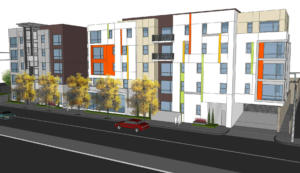 ORANGE COUNTY AND L.A. COUNTY RESIDENTS ARE INCREASINGLY FORCED TO MOVE OUT OF THE COUNTY IN WHICH THEY WORK DUE TO THE STATE’S HOUSING CRISIS, MAKING PROJECTS LIKE FULLERTON FAMILY HOUSING EVEN MORE NECESSARY, R.D. OLSON’S BILL WILHELM TELLS GLOBEST.COM.
ORANGE COUNTY AND L.A. COUNTY RESIDENTS ARE INCREASINGLY FORCED TO MOVE OUT OF THE COUNTY IN WHICH THEY WORK DUE TO THE STATE’S HOUSING CRISIS, MAKING PROJECTS LIKE FULLERTON FAMILY HOUSING EVEN MORE NECESSARY, R.D. OLSON’S BILL WILHELM TELLS GLOBEST.COM.
FULLERTON, CA—Orange County and L.A. County residents are increasingly forced to move out of the county in which they work due to the state’s housing crisis, making projects like Fullerton Family Housing even more necessary, R.D. Olson Construction’s president Bill Wilhelm tells GlobeSt.com. The firm began construction last month on Related California’s 55-unit affordable-housing project here, its fourth such project, and completion is expected in May 2018.
The site is located at 335 East Santa Fe Ave., in close proximity to Downtown Fullerton and adjacent to the area’s train station. We spoke with Wilhelm about what makes this project unique and how affordable-housing construction compares to other multifamily projects.
GlobeSt.com: What features and amenities will Fullerton Family Housing include?
Wilhelm: Fullerton Family Housing will comprise 54 affordable units with one manager’s unit onsite. The five-story, 52,407-sqaure-foot complex will have studio, one-, two- and three-bedroom apartments available for rent, and includes a 24,000-square-foot parking garage. The walkability of the area offers a huge benefit for future residents, who will be able to walk to downtown Fullerton and access a train station adjacent to the site. The complex itself includes a courtyard, playground, BBQ area, on-site leasing office, bike storage room and laundry facilities. It is expected to be completed in summer of 2018.
GlobeSt.com: What need do affordable housing projects like this fill for Orange County residents?
Wilhelm: There is a full-fledged housing crisis in California, and this is especially the case in Orange and Los Angeles counties. Residents increasingly are forced to move out of the county in which they work. There is a severe shortage of affordable housing, and projects like these will allow more Orange County residents to be able to afford to stay in the area. Housing in prime, walkable locations with convenient access to public transportation gives residents more access to jobs, a better quality of life and allows them to spend more time with their families and less time commuting.
GlobeSt.com: Is there anything unique about affordable housing construction in comparison with other multifamily projects?
Wilhelm: Typically, affordable multifamily projects are in neighborhoods with smaller sites that can’t accommodate larger apartment complexes, which can present construction challenges. For this project, we are working with the railway, which is providing us with additional temporary storage space for building materials and setup. When building up to the property line, creative partnerships like this are essential to ensure construction is completed on time and under budget.
Additionally, affordable-housing complexes typically are built with easy access to public transportation to accommodate families who may not have access to their own transportation. Proximity to a train station is a big reason we chose the site for Fullerton Family Housing. This contributes to a lessened need for parking spaces, which maximizes the number of units that can be built on the smaller sites. An affordable-housing site could have 80 units, but only 40 parking spaces.
GlobeSt.com: How does this project fit into R.D. Olson Construction’s multifamily portfolio?
Wilhelm: This project is R.D. Olson Construction’s fourth affordable complex, and adds to our extensive multifamily portfolio in California. Our multifamily work spans many market sectors, and includes senior housing, live/work townhomes, luxury apartments, condos, student housing and more. As far as affordable housing, our most recent project was the 180-
unit Village at Calabasas, which was completed in 2016.
R.D. Olson Begins Construction on Fullerton Family Housing
 Affordable housing project bolsters the general contracting firm’s multifamily portfolio.
Affordable housing project bolsters the general contracting firm’s multifamily portfolio.
Irvine, Calif.– R.D. Olson Construction, an award-winning general contracting firm in California, has commenced work on a 55-unit affordable housing project in Fullerton, the company announced today. The multifamily apartment complex is the firm’s fourth affordable housing project, and completion is expected in May 2018. Fifty-four of the units will be affordable, with one manager’s unit on-site.
The five-story, 52,407-square-foot complex will be comprised of studio, one-, two- and three-bedroom apartments in two buildings that are connected by a bridge on all floors. There also will be a 24,000-square-foot parking garage on the one-acre site, which is located at 335 East Santa Fe Avenue, in close proximity to Downtown Fullerton and adjacent to the area’s train station. Amenities will include a courtyard, playground, BBQ area, on-site leasing office, laundry facilities and bike storage room.
“With California experiencing a full-fledged housing crisis, we’re proud to be a trusted partner that will help provide much-needed housing to Orange County residents,” said Ian Gardiner, senior vice president of R.D. Olson Construction. “This project is another great addition to R.D. Olson’s existing multifamily portfolio and our team is committed to executing a product that delivers on our mantra – when every detail counts.”
Related California is the developer for the project, with IDS Group serving as the architectural firm. The R.D. Olson Construction project team includes Gary Hoskins, project manager; Jeff Stratton, project superintendent and Mat Epperson, project engineer.
The firm’s other multifamily projects in the area include 27 Seventy Five Apartments in Costa Mesa, Coronado at Newport North in Newport Beach, Marriott Newport Coast Villas Newport Beach and Sea Villas at the St. Regis in Dana Point. The Village at Calabasas, which completed in 2016, marked R.D. Olson Construction’s last affordable housing project.
Record Number Of California Hotel Rooms Open in First Half of 2017
 The number of new hotels that opened in California increased 53 percent in the first half of 2017 and there were 15 percent more hotels in development and 6 percent more under construction vs. the same period in 2016, according to an Atlas Hospitality Group study.
The number of new hotels that opened in California increased 53 percent in the first half of 2017 and there were 15 percent more hotels in development and 6 percent more under construction vs. the same period in 2016, according to an Atlas Hospitality Group study.
“This is a record number of hotel rooms that have opened in the first six months of the year,” said Alan Reay, president of Irvine-based Atlas.
Twenty-six hotels, with 4,730 rooms, opened in the first half of 2017 vs. 17 hotels in the same period of 2016.
Reay said many hotels are being built now because the price of buying and renovating older hotels is high, that it is more attractive to build a new hotel, construction financing and loans are readily available and there have been six years of revenue increases.
In Orange County three hotels with 461 rooms opened during the first half of the year.
Homewood Suites by Hilton Irvine John Wayne Airport: The 161-room hotel opened this winter. It offers studio, one- and two- bedroom suites. Each has a fully equipped kitchen. The hotel has a fitness room, pool, business center and meeting rooms.
The project was Irvine-based R.D. Olson Construction’s first partnership with hotel management and development company DKN Hotels, also based in Irvine.
R.D. Olson Construction Named as One of the Best Places to Work in Orange County for the Second Year in A Row
 We were just notified that we have once again made the list of Best Places to Work in Orange County. We have attempted to receive the award twice and have successfully made the list both times, so that speaks volumes to the atmosphere that all our associates try to cultivate within the walls of our office as well as out in the field on our project sites. The incredible positivity that all our associates possess is a testament to the entrepreneurial spirit that drives our business forward. When our associates are able to make decisions for the way they handle their job and are rewarded consistently for their initiative, it makes for a truly great and dynamic corporate environment.
We were just notified that we have once again made the list of Best Places to Work in Orange County. We have attempted to receive the award twice and have successfully made the list both times, so that speaks volumes to the atmosphere that all our associates try to cultivate within the walls of our office as well as out in the field on our project sites. The incredible positivity that all our associates possess is a testament to the entrepreneurial spirit that drives our business forward. When our associates are able to make decisions for the way they handle their job and are rewarded consistently for their initiative, it makes for a truly great and dynamic corporate environment.
Boys And Girls Club Playground Build
On June1 7th, a group from R.D. Olson went out to the Boys and Girls Club of Garden Grove and helped build a playground in the backyard of the club. It was a fun day that had the team shoveling mulch and putting together pieces of playground equipment that the kids will get to enjoy during their summer camps and after-school stays at the Boys and Girls Club.
[portfolio_slideshow carouselsize=3]
Red Nose Day 2017: Another Chance to Show Our Funny for the Kids
R.D. Olson Construction once again showed their humorous and charitable hearts by taking part in the Red Nose Day Campaign to end childhood poverty worldwide. Just some of the team clowning around after donating to the worthy cause.
[portfolio_slideshow carouselsize=3]
What Determines If Hotel Projects Move Forward?
By Carrie Rossenfeld – GlobeSt.com
 IRVINE, CA—Timing is a major issue in hotel projects as this point; if a project is not far enough along in drawings, permits, etc., it may not make it off the ground, R.D. Olson Construction’s president Bill Wilhelm tells GlobeSt.com. The firm, a successful builder of hotel properties in California recently completed construction on Homewood Suites by Hilton Irvine/John Wayne Airport. The ground-up project marks the firm’s first partnership with Irvine-based hotel management and development company DKN Hotels.
IRVINE, CA—Timing is a major issue in hotel projects as this point; if a project is not far enough along in drawings, permits, etc., it may not make it off the ground, R.D. Olson Construction’s president Bill Wilhelm tells GlobeSt.com. The firm, a successful builder of hotel properties in California recently completed construction on Homewood Suites by Hilton Irvine/John Wayne Airport. The ground-up project marks the firm’s first partnership with Irvine-based hotel management and development company DKN Hotels.
The four-story, 161-room hotel is located in the Irvine business and industrial district and is close to Orange County shopping centers the District, South Coast Plaza and Fashion Island. The hotel represents the firm’s third completed project in Irvine, with the Irvine Spectrum Marriott currently underway.
The 126,000-square-foot hotel boasts studios and one- and two-bedroom suites with 42‑inch HDTVs and kitchens that include a full-size refrigerator, microwave, stove and dishwasher. The property’s outdoor amenities include a pool and spa, fire pit, BBQ grills and a sports court with options for basketball, volleyball, badminton and smashball.
R.D. Olson also recently completed work on the 174-room Country Inns & Suites by Carlson in the Anaheim Resort District and the 200-room Residence Inn by Marriott hotel in Wailea, Maui, HI, the first family-centric hotel in Wailea. Other recent completions include Paséa Hotel & Spa in Huntington Beach, CA, the 144-room Residence Inn by Marriott in Old Town Pasadena, CA, and the 94-room Hampton Inn & Suites in Glendale, CA. The firm is currently building additional regional hospitality projects including the 130-room Lido House Hotel resort in Newport Beach, CA; the 271-room full-service Irvine Spectrum Marriott in Irvine, CA; and the 118-room Residence Inn by Marriott Santa Barbara/Goleta in Goleta, CA.
We spoke with Wilhelm about the Homewood Suites project, hotel-development trends he is noticing in Orange County and takeaways from ALIS, which he recently attended.
GlobeSt.com: Why was this project a good fit for the airport market?
Wilhelm: It is in kind of a secondary airport to the market, and based on its vicinity to the airport, will allow it to be a strong secondary feeder to the airport market. It’s not directly at the airport, but a spit throw away. It has easy access, and it’s in an area with a lot of corporate business, more industrial type of business. It’s a great location: off the beaten path, but with great geographic identification. Also, Tustin’s Marine Corps Air Station is still going thru major discussions—what will they do and what will happen. It’s the first steps to what will eventually be promising development in that area.
GlobeSt.com: What hotel-development trends are you noticing in Orange County?
Wilhelm: There are two trends. One is that Orange County itself has had so much growth take place—both residential growth and continued enhancement of corporate growth. The business sector and the growth of tourism, Disneyland and that whole market has been strong. Disneyland continues to do what the Irvine Spectrum area is doing: constantly challenge themselves by asking, “What are we current with what are the general population’s needs? What can we offer our guests in terms of more experiences? They’re always thinking outside the box on enhancements. Irvine Spectrum, too, constantly challenges itself as far as what the needs are today. In the Spectrum area, some retail pieces have come and gone, and they’re stepping up more food-service providers. They’ve done a good job of putting great restaurants in and entertainment so people want to hang out there—you can have a great dinner and people watch. You have the tourist side of it and also the corporate business side of it. When you look at the occupancy and rental part of it in the Orange County market, so many things are taking place where companies are repositioning and expanding based on the opportunities.
The office side has also picked up. But from a hospitality perspective, Orange County is an area that has done well and has additional growth opportunities because you have multiple feeders: tourism, corporate and residential.
GlobeSt.com: What trends did you notice at this year’s ALIS conference?
Wilhelm: The overall trend is one of a little bit of caution. Predictions still show a very strong year, 2017 going into 2018; predictions are that they will be equivalent to 2016, and there may be a little bit of growth. There are a number of projects that are in planning, under construction and in development.
I look at timing and finance. I really want to understand where they are in the timing cycle: drawings, permits, where are they in their financing? There’s a concern that somewhere down the road, we will start to see a few deals not go forward because of timing. We’re also seeing some developers that recognize that. Everyone is looking forward and trying to make that mad dash to the finish line; there’s a lot of adaptive reuse where the individual can get their hands on a property and be out there in renovation mode, and then 12 to 14 months later, they now have heads on beds; whereas, a new property could take 14 to 24 months or longer. A lot of it is geographic, too—the market will play a stronghold, and primary markets will always do well.
I’ve heard the saying, “California isn’t overbuilt; it’s under-demolished.” From a hotel perspective that’s so true. There are so many older properties, but what will it take to bring a 25-year-old property to current standards. I think in today’s world, everyone’s willing to pay a few more dollars for a fresh, new property that provides the experience that people are seeking. You want to be out and engaged with socialization around you, whether out by pool or in the lobby. There’s a lot of business taking place in common areas among people who may not even be guests of the hotel, but are using the business-area environment. It’s a way to do business to have a cup of coffee and have a meeting.
GlobeSt.com: What does your firm currently have in the pipeline?
Wilhelm: We’re busy, but always looking for great opportunities. We have some nice projects under construction today in hospitality, including new ground-up hotels and adaptive reuse that converts office to hotels. We’re doing a refresh of Palomar Hotel in Beverly Hills, CA—we’re refurbishing the lobby, bar area and amenities. We’re also in the time-share market and the education market. Among all those markets, I still see another 18 months of active work with some pretty exciting projects./p
R.D. Olson Contributes Insight to the Wall Street Journal
 Immigrant Crackdown Worries Food and Construction Industries
Immigrant Crackdown Worries Food and Construction Industries
By Jacob Bunge, Heather Haddon, and Eric Morath
Memos issued by the Trump administration on Tuesday said millions of people living illegally in the U.S. are subject to deportation and called on local authorities to enforce immigration laws.
The announcement set many in the food business in particular on edge. “We’re preparing our members as best we can,” said Jim Bogart, president of the Grower-Shipper Association of Central California, which represents producers of vegetables, mushrooms and grapes.
An executive order signed by President Donald Trump last month banning entry to the U.S. from seven Muslim-majority countries for at least 90 days over terrorism concerns has been held up by courts.
A White House official on Wednesday confirmed that it wouldn’t issue its revised executive order on immigration travel restrictions until next week. The administration had previously said it would release a new order this week.
Administration officials suggested the new executive order would have a similar aim as the previous one. In an interview on Fox News on Tuesday, policy adviser Stephen Miller said, “Fundamentally you’re going to have the same basic policy outcome for the country.”
The agriculture and construction industries have relied on immigrants for decades to do tough, low-paying jobs U.S. citizens often avoid, from picking berries to slicing up hogs to erecting framing for houses. Many of these workers are undocumented.
“Business is business, and whether it’s the farming industry or the construction industry, we already have a resource issue,” said Bill Wilhelm, president of R.D. Olson Construction in Irvine, Calif., which specializes in hotel construction. “You already have a shortage of documented individuals. So if you have fewer and fewer undocumented, at the end of the day it’s going to have an impact on projects.”
Foreign-born workers make up about three-quarters of the roughly 1.1 million workers on U.S. farms, and nearly half aren’t legally authorized to work, according to the U.S. Department of Agriculture. In the construction industry, 13% of workers in 2014 were undocumented, according to data from the Pew Research Center, along with about 9% of workers in the leisure and hospitality industry, which includes restaurants.
Labor-strapped American employers increasingly rely on immigrants—including those in the U.S. illegally—to counter the trend of an aging native-born population. If millions of illegal immigrants were deported, “you would have massive labor shortages,” said University of Michigan labor economist Donald Grimes.
Department of Homeland Security officials said their limited resources mean they would focus on immigrants who pose a public-safety risk. But they also said immigrants aren’t exempt from deportation just because they don’t fall into a priority group. “The enforcement priorities are criminal aliens as well as those who pose national-security and public-safety threats,” said White House spokesman Michael Short on Wednesday.
In Fresno, Calif., immigration attorney Camille Cook said she is helping to organize rapid-response teams for the area’s farmworkers, many of whom are undocumented immigrants from Mexico. Those teams aim to advise dairy and crop workers on their rights if immigration authorities show up on their doorsteps, she said.
Not all of the changes—like expedited removals for immigrants—will take effect immediately. Carol Meylan, director of Intra-Agency Programs at Catholic Charities of Los Angeles, said she expected most effects of the executive orders wouldn’t be felt for several months as the government hires more border-patrol agents and puts new procedures in place.
Still, Ms. Meylan said, “with 5,000 more border-patrol officers [planned], we’re anticipating there’s going to be a big change.”
Mr. Wilhelm of R.D. Olson Construction said he is waiting to see the impact of the government’s moves but expects that stepped-up deportations would affect all operators in his industry.
Immigrants wait for work last month at a day-labor pickup site in Stamford, Conn. The city has an official zone for employers to pick up such workers.
The Grower-Shipper Association, based in Salinas, Calif., has issued recommendations since last month about how to respond to immigration raids, outlining workers’ rights and current immigration policies in coordination with other industry groups. Mr. Bogart said half his days now are dedicated to calls with producers and lawmakers to discuss immigration issues.
Others are already seeing fallout from the tougher tone from the Trump administration. Paul Halderson said his 1,200-cow dairy farm near La Crosse, Wis., was left short-handed after losing a handful of immigrant employees in recent weeks, who opted to return to Mexico.
While Mr. Halderson said his employees all have legal standing to work in the U.S., some have worried about family members and the general climate for immigrants. “It is unrealistic to believe that dairy farming can continue as it is without the Mexican employees,” said Mr. Halderson.
Harold McClarty, co-founder of HMC Farms in California’s Fresno County, estimated the crackdown could lead to millions of dollars in losses for his stone-fruit and table-grape operation.
The restaurant industry, which also relies heavily on foreign-born workers, has long used E-Verify, a federal worker-screening program that allows employers to check employees’ legal status online.
“We have let our franchisees know of the increased activity and used it as an opportunity to remind them…that all franchisees use E-Verify,” said a spokeswoman for Dunkin Brands Group Inc., owner of Dunkin’ Donuts, which was an early adopter of E-Verify.
—Chris Kirkham, Julie Jargon and Ian Lovett contributed to this article.
Four R.D. Olson Projects Mentioned and Honored in California Meeting and Events Magazine

It’s remarkable to have four of our recent projects mentioned and honored in California Meeting & Events Magazine’s Winter Issue. The anticipation for the Irvine Spectrum Marriott (page 29) and Lido House Hotel (page 44) is increasing, while Pasea Hotel & Spa is named “Best New Venue” and W Hotel is named “Best Renovation” (page 39). Check all the full stories here.
R.D. Olson Construction Completes Inaugural Project with DKN Hotels

Award-winning general contracting firm celebrates grand opening of Homewood Suites by Hilton Irvine/John Wayne Airport
Irvine, Calif. – R.D. Olson Construction, a premier builder of hotel properties in California, proudly announces it completed construction on Homewood Suites by Hilton Irvine/John Wayne Airport, in close proximity to John Wayne Airport. The ground-up project marks the firm’s first partnership with Irvine-based hotel management and development company, DKN Hotels.
The four-story, 161-room hotel is located in the heart of the Irvine business and industrial district, and minutes away from the shores of Newport Beach, Corona del Mar and Laguna Beach. The hotel also is close to premier Orange County shopping centers such as The District, South Coast Plaza and Fashion Island. Homewood Suites by Hilton Irvine/John Wayne Airport is the firm’s third completed project in Irvine, with the Irvine Spectrum Marriott currently underway.
“When presented with the opportunity to partner on a project in our own backyard, we gladly accepted the job,” said Bill Wilhelm, president of R.D. Olson Construction. “Our deep-rooted experience in hospitality made this a perfect new endeavor with DKN Hotels, and we enjoyed working with them to deliver a top-notch product for our community.”
Homewood Suites by Hilton Irvine/John Wayne Airport gives nod to Orange County’s booming high-tech community with a modern, contemporary design that includes metal ceilings, smooth stone surfaces, and vibrant blue, green and orange colors in hotel accents and artwork. The open lobby features 30-foot ceilings and a convenient market for quick grab-and-go items. The hotel finishes are reminiscent of computer chips, graphic gaming imagery and abstractions, and lounge-like furnishings create a relaxing and home-like environment for business travelers.
Managed by DKN Hotels, Homewood Suites by Hilton Irvine/John Wayne Airport features an array of business and public amenities such as a business center and more than 1,500 square feet of meeting space equipped with complimentary high-speed internet access, state-of-the-art audio visual equipment and natural lighting.
The 126,000-square-foot hotel also boasts spacious studios and one- and two-bedroom suites with 42‑inch HDTVs and fully-equipped kitchens that include a full-size refrigerator, microwave, stove and dishwasher. The property’s outdoor amenities include a pool and spa, fire pit, BBQ grills and a sports court with options for basketball, volleyball, badminton and smashball.
“It has been a pleasure working with R.D. Olson Construction on the Homewood Suites by Hilton Irvine/John Wayne Airport project,” said Kiran Patel, owner and CEO of DKN Hotels. “DKN Hotels is excited to finally open the doors and looks forward to working with R.D. Olson Construction on future projects.”
“Our motto ‘when every detail counts,’ is woven in the fabric of our firm and truly came through in this project, as proven in the quality of the finished product,” added R.D. Olson Construction Project Engineer Joe Amenta. “We’re proud of the team who dedicated themselves to exceeding expectations, and tackled every challenge thrown along the way.”
R.D. Olson Construction recently completed work on the 174-room Country Inns & Suites by Carlson in the Anaheim Resort District and the 200-room Residence Inn by Marriott hotel in Wailea, Maui, Hawaii, the first family-centric hotel in Wailea. Other recent completions include Paséa Hotel & Spa, a 250-room upscale boutique hotel in Huntington Beach, California, at the master-planned Pacific City project as well as the the 144-room Residence Inn by Marriott in Old Town Pasadena, California and the 94-room Hampton Inn & Suites in Glendale, California.
The firm is currently building additional regional hospitality projects including the 130-room Lido House Hotel resort in Newport Beach, California; the 271-room full-service Irvine Spectrum Marriott in Irvine, California; and the 118-room Residence Inn by Marriott Santa Barbara/Goleta in Goleta, California.
Lee & Sakahara Architects, Inc. served as the architectural firm for the project. SANDdesign was the interior design firm.
R.D. Olson Construction Completes First Hotel with Carlson Rezidor Hotel Group in Anaheim Resort District
 Country Inn and Suites By Carlson, Anaheim, CA Celebrates Grand Opening.
Country Inn and Suites By Carlson, Anaheim, CA Celebrates Grand Opening.
Anaheim and Irvine, Calif. – R.D. Olson Construction, a premier builder of hotel properties in California, today completed construction of Country Inn & Suites in Anaheim, California. The construction marks the firm’s inaugural project with Carlson Rezidor Hotel Group as well as hotelier entities SunCoast Properties and Spectrum Development under the corporate name of Disney Way Partners.
The five-story, 174-room hotel is located in the Anaheim Resort District that features upscale shopping, entertainment and first-in-class dining. Walking distance from Disneyland Park and across from the Anaheim GardenWalk, Country Inn & Suites Anaheim is the firm’s second hotel in the dynamic resort area since 2013.
“We found a great partner in Carlson Rezidor Hotel Group, SunCoast Properties and Spectrum Development on this project, and we’re proud to open the property to the public,” said Bill Wilhelm, president of R.D. Olson Construction. “Our team’s hospitality experience allowed us to work seamlessly to provide guests with quality amenities in a vibrant location.”
Country Inn & Suites Anaheim incorporates a modern and contemporary design with touches of home. The open lobby welcomes guests with two large fireplaces, rich finishes, a kid’s corner and a game-room situated off the lobby which features a fiber optic ceiling. Guests also can enjoy stunning views of Disneyland’s fireworks show from the outdoor pool-deck that features an upgraded custom zero gravity heated pool and whirlpool tub.
Managed by Hospitality Management Corporation (HMC), the hotel boasts an array of public amenities such as free Wi-Fi, complimentary hot breakfast, a 24-hour state-of-the-art fitness center, business center and on-site laundry. The property also features a large bar and lounge and gift shop so guests have convenient access to snacks, toiletries and souvenirs. The location is also situated nearby popular attractions including the Anaheim Convention Center and Angel Stadium.
“HMC is delighted to be part of this wonderful new addition to the Anaheim Resort District. We’ve worked closely with R.D. Olson Construction, Suncoast Properties, Carlson Rezidor Hotel Group and the entire team from the hotel’s inception, to groundbreaking, build and now the hotel’s grand opening,” shared Leo Spriggs, President/CEO of hotel manager Hospitality Management Corporation. “As always, our goal is to provide the best staff, highest quality of service and an outstanding guest experience in this highly competitive tourist area in Southern California and we are confident the property will be a huge success.”
The 120,000-square-foot hotel includes queen, king and king suite room configurations designed to provide guests with a variety of amenities such as free high-speed internet, a 42” flat panel TV, a microwave, refrigerator and coffeemaker, as well as a work desk. Additionally, the property’s suites offer guests additional space with a sitting area and comfortable sleeper sofa.
“The success of this project can be directly attributed to our team’s dedication to building high-quality projects and the longstanding relationships we have maintained with the City of Anaheim and Disneyland Park,” said Jeremy Briggs, project manager for R.D. Olson Construction. “Our team’s understanding of the breadth of the project, coupled with our ability to deliver on schedule and on budget, made it a successful endeavor for all parties involved.”
R.D. Olson Construction recently completed work on the 200-room Residence Inn by Marriott hotel in Wailea, Maui, Hawaii, the first family-centric hotel in Wailea. Other recent completions include Paséa Hotel & Spa, a 250-room upscale boutique hotel in Huntington Beach, California, at the master-planned Pacific City project, the 144-room Residence Inn by Marriott in Old Town Pasadena, California, the 94-room Hampton Inn & Suites in Glendale, California.
The firm is currently under construction on additional regional hospitality projects including the 130-room Lido House Hotel resort in Newport Beach, California; the 271-room full-service Irvine Spectrum Marriott in Irvine, California; the 118-room Residence Inn by Marriott Santa Barbara/Goleta in Goleta, California; the 161-room Homewood Suites in Irvine, California.
FORMGROUP served as the architectural firm for the project. The Design Studio served as the interior design firm./p>
Collins College of Hospitality Debuts Donor-Funded Renovation
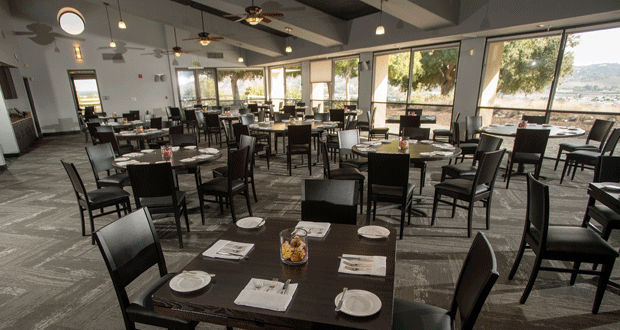 As seen in Lodging Magazine, November 16, 2016
As seen in Lodging Magazine, November 16, 2016
POMONA, Calif.—Industry partners are making certain that Cal Poly Pomona’s hospitality management students are at the forefront of the profession by supporting a half-million dollar renovation at The Collins College of Hospitality Management.
The project included a total transformation of the dining room of The Restaurant at Kellogg Ranch (RKR) and the upgrade of the college’s demonstration kitchen, allowing future hospitality leaders to access professional-quality facilities and equipment.
“These renovations help keep us updated in times when technology is changing so quickly. As the future comes at light speed, the ability to work with new equipment places us in front of our competition,” says hospitality management student Melissa Huang.
The renovations at the RKR were provided primarily by The Gettys Group, an international hotel architect firm, and R.D. Olson Development, a general contractor and construction management firm, specializing in hospitality, retail, and office building.
The Don and Lorraine Freeberg Foundation, a longtime supporter of the college, generously funded the $240,000 demonstration auditorium project, which was executed by Cal Poly Pomona’s Facilities Planning and Management Department. The foundation also provided the new flooring throughout the RKR.
Hospitality management student Rachel Watts adds, “Having state-of-the-art classrooms prepares us for professional jobs as we enter the industry after graduation. It means so much to know that our donors are really invested in our futures.”
CEO, Bob Olson, recognized in the Orange County Business Journal’s OC500

Build Magazine recognizes R.D. Olson Construction as Most Innovative General Contractor and Most Innovative Hotel/Resort Project for the Pasea Hotel & Spa
More public spaces. Catering to international visitors. Hotels with local flair.
Those are just a few trends veteran developer Bob Olson is seeing in the hotel industry. He owns Irvine-based R.D. Olson Construction and Newport Beach-based R.D. Olson Development, both of which are juggling half a dozen hotel projects in an industry seeing years of growth after the Great Recession.
Hotel expansion in Orange County is ongoing, as developers (in addition to Olson) build out 10 new hotels, which will add 1,504 rooms to the marketplace. Six hotels already have opened this year, according to Irvine-based Atlas Hospitality Group.
“There are markets that are getting overbuilt,” Olson said. “The losers in those markets will be the old hotels. It’s not that we’ll be overbuilt – we’ll be under-demolished.”
Alan Reay, president of the Irvine-based real estate company Atlas Hospitality Group, agrees.
“Year-to-date hotel rooms under construction for the U.S. are up almost 30 percent from where they were last year,” Reay said. “A lot of people are worried that we’re building too many hotel rooms.
“It’s really a big threat to the older hotels that haven’t been updated or renovated. A lot of the hotels have lost their franchise because they haven’t kept up and are suffering. These are the hotels that will have to be demolished.”
The Register sat down with Olson and Bill Wilhelm, president of R.D. Olson Construction, to discuss the industry and their projects underway. Their answers have been edited for length and clarity.
The Lido House Hotel in Newport Beach is a huge, historic project. Can you tell me about plans for the development?
Olson: That property is the old City Hall. We had to compete to win that project. I live in Newport Beach. So for me it was pretty simple what the concept should be. The concept is Newport nautical architecture and lifestyle. Our whole concept is to be curators of Newport Beach. We’re one year away from opening.
On the development side, how do you select what properties you want to be involved with?
Olson: We focus on the markets we like, which have multiple demand generators. Then we work to try and find the land. The last 15 hotel’s we’ve developed are ground up. We’ve opened 11 since the Great Recession.
How hard is it to develop a project like the Paséa, right across from the beach?
Olson: You could not do a project like this again today. The entitlement process took the original developers 11 years to get the entitlements, and they got hit by the Great Recession. We were fortunate to buy this with all the entitlements. But the property plans are our own plans, nobody else’s. We brought in Pacific Hospitality Group as our operating partner and co-developer.
Are these considerations different from the construction side?
Wilhelm: We look at the customer, the client, the partner. Location is also important, but also the uniqueness of the property. Whether it’s a hospitality project or one of our timeshare projects or even an education project, it’s finding a product that’s special to the community.
How has Airbnb affected the hotel industry?
Olson: It’s hard to measure. We know that when the Super Bowl happened, Airbnb took the top off the demand, or the hotels didn’t sell out because that last demand went to Airbnb. But we’re not seeing an affect on our hotels. For us, we need to be able to compete. We need to provide our guests something that Airbnb can’t, is not or cannot do.
Are you seeing more demand to work on existing hotels?
Wilhelm: The Los Angeles market is a very hot market right now for revamping and reuse and repositioning. We’re starting to see it some in the Orange County market, but not to the extent of the L.A. market, which is doing things like taking an office building and repurposing it as a hospitality project.
Last year, about 97 percent of hospitality projects were “new ground up.” Today, about 51 percent is adaptability, reposition and renovation, and only 49 percent is new ground up. We’re starting to see a swing in that market. Part of it is saturation of the new ground up, the ability of developers to find land, the price side of the equation, getting to market as fast as they can and development costs which are making deals more difficult. Construction costs over the last 12 months have soared 10-15 percent in California.
Olson: Part of it’s new building codes, energy code changes which is affecting internal systems, the mechanical systems.
Are there any issues finding workers?
Olson: There are huge resource issues now. Resources are a huge cost. R.D. Olson has longstanding relationships with subcontractors. It really gives us a competitive advantage. Bill has access to companies, to subcontractors, who love working with him because of what we do. We get jobs done, everybody gets paid and it’s a good project.
For R.D. Olson Development, having a construction company is a competitive advantage in the marketplace as well.
Wilhelm: That’s why the right customer fit is so important. We’re bringing our subcontractors to the table, guys that rely on us for funding. And they are guys that we can count on because they know they are getting paid on time. We really focus on the relations. We spend more time today on enhancing those relationships and building new relationships. We need to have subs capable of doing work on all the different types of projects we do.
There’s also a geographic element. A year ago, you could take guys from Orange County to Los Angeles. Today, it just doesn’t happen. Resources are limited, so you need to manage relationships in geographic areas. Guys don’t go out as far when there’s work for them right in their backyard.
Orange County’s tourism groups have made huge efforts to attract more international tourists to Orange County. Are you seeing more of these visitors at your properties, and is there anything being done to attract these customers specifically?
Olson: Orange County is a great destination for international travelers. We’re especially seeing a lot of visitors from the China market.
We just finished one project, the Casino Hotel in Bell Gardens, that was truly designed and implemented based on the Asian gambling traveler. We’re involved in a couple of hotels today at LAX airport, and part of that theme is the international travelers, providing for them once they’ve checked out but have six, seven, eight hours to kill before their flight. We’re creating special guest services rooms that are suited to the different Asian cultures. Our menus are also adapting to the Asian traveler.
Our biggest growth for the international market is definitely China; 200 million middle-class people are in China. That’s more than half of our population. The numbers are staggering.
What do you think the hotel industry will look like in the next few years?
Olson: When you stay at our hotels, you really feel connected to where you are. The Paséa is all about a beach community. I’ve watched international travelers come in with amazement. In downtown Pasadena, that hotel is all about Old Town Pasadena, the architecture, the interior. You know you’re in a town with a lot of history. Even though we work on branded hotels, too, there is always a theme. The theme for the Irvine Spectrum hotel is the Irvine Ranch and the history of the ranch. That will have a rooftop bar.
Public spaces are really becoming space to connect. When you walk through a hotel, there will be many places to sit down and connect in small groups.
Is there any part of the Orange County hotel industry that is untapped at this point?
Olson: If you look at where we’re developing, you are going to see that it plays into our strategy of building where there are multiple demand generators and opportunities for new product.
Where are we now in the development cycle?
Olson: All developers want to know where we are in the cycle. We know where we were in 2009; it was terrible. Are we at the end of this cycle of recovery? Our philosophy as developers and builders is that we can’t predict when the cycle ends, but we can be prepared for it. We’re built for taking advantage of the great economic times and are prepared for the down times. The short-term horizon, we think, looks good.
Wilhelm: On the construction side, in the next couple years we still see sustainable growth. We’re always looking for where we go next and how to respond to changes in the cycle. We’re strengthening our core and looking at different industries.
Irvine and Anaheim seem to be major development hubs right now. Can you tell me about why there are so many hotels being built in these areas?
Olson: For Anaheim, it’s the demand that Disneyland’s creating. It’s an incredible market with Disneyland and the convention business.
For Irvine, the Irvine Spectrum is the new growth area for Orange County, both established businesses and entrepreneurial businesses. It’s the center, a gateway for quality housing, great, educated employees, and it really is the convalesce of tech, education, recreation, so many different demand generators and exciting things that are happening. With Great Park, the baseball fields and soccer fields and there’s just so much for the community to do and for people outside of the community as well. The Irvine Co. is really creating a 24-hour city with the retail, the restaurants, the housing and the tech offices.
Can you tell me about the hotels you have in the works for each of these areas?
Wilhelm: In Irvine, we have our full-service property underway at the Spectrum, a 15-story Marriott. We’re working on a Courtyard Inn and Suites in Anaheim, and we’ve got two other hotel properties in Anaheim we are working with existing clients on. That market is continuing to stay very hot.
Habitat for Humanity 2016
R.D. Olson Construction took part in a Habitat for Humanity Build Day on October 21st at 2238 S. Flower St. in Santa Ana to contribute to an in-progress construction job. R.D. Olson team members got to put the finishing touches on a couple of homes that had been built for a couple of very deserving families.
[portfolio_slideshow carouselsize=3]
18th Annual – September 8 & 9, 2016
R.D. Olson Annual Surf “Board” Meeting
[portfolio_slideshow carouselsize=3]
R.D. Olson Completes Residence Inn by Marriott in Wailea, Hawaii
Maui property first Residence Inn by Marriott in Hawaii and first family-centric hotel in Wailea; hotel named one of Marriott International’s HALO Hotels for 2016
 Wailea, Hawaii and Irvine, Calif. – R.D. Olson Development, in partnership with Joseph Martelli Real Estate Investments Inc., has opened the 200-room Residence Inn by Marriott hotel in Wailea, Maui, Hawaii, marking the second Hawaiian development for the Newport Beach, California-based developer. Executives from R.D. Olson Development, Marriott International and project contractor R.D. Olson Construction joined civic leaders including Mayor Alan K. Arakawa at the grand opening.
Wailea, Hawaii and Irvine, Calif. – R.D. Olson Development, in partnership with Joseph Martelli Real Estate Investments Inc., has opened the 200-room Residence Inn by Marriott hotel in Wailea, Maui, Hawaii, marking the second Hawaiian development for the Newport Beach, California-based developer. Executives from R.D. Olson Development, Marriott International and project contractor R.D. Olson Construction joined civic leaders including Mayor Alan K. Arakawa at the grand opening.
With the highest revenue per available room (RevPAR) in the United States, Wailea is a luxurious resort community that draws millions of visitors each year. The project, which is the first Residence Inn by Marriott on the Hawaiian Islands, is also the first property in the Wailea market designed to accommodate more budget-conscious family travelers.
Located in the heart of Wailea near The Shops at Wailea, beautiful Wailea Beach, the Wailea Beach Marriott Resort & Spa and the Grand Wailea Resort, the Residence Inn by Marriott at Wailea provides ample opportunity for family members of all ages to take advantage of the Hawaiian lifestyle. Wailea spans more than 1,500 acres in South Maui, and features five crescent-shaped beaches, high-end golf courses, world-class restaurants and shops, and regular entertainment at various venues. Whether walking or taking advantage of the hotel’s complimentary shuttle to nearby amenities, the prime location puts access to Hawaiian culture and adventure at guests’ fingertips.
“This was a unique opportunity for us to develop in this area and create a property that would not only provide an authentic Hawaiian experience for guests, but do so at a substantial value,” said Bob Olson, founder and CEO of R.D. Olson Development. “The area’s natural beauty and plentiful world-class amenities make it a prime location for family vacations and we are proud to bring a property to the region that focuses on families’ needs.”
Residence Inn by Marriott Wailea is designed around a theme that pays homage to the local Hawaiian culture, evoking an inherent Hawaiian ambiance that touches on heritage as well as current local culture. The architectural detailing of the traditional plantation style creates an authentic underlying tone throughout the design. Elements that tell the story of a historical culture filled with customs and symbolisms, as well as unique art and materials relevant to modern island lifestyles, are also incorporated throughout the property.
Throughout the public and guestroom spaces, the use of familiar Hawaiian patterns, textures, and colors build upon the picturesque landscape, with design that draws on the nature, culture, and the mystical legacies of local customs. The integration of modern surf art created by genuine surfers, and traditional paintings from local artists, paired with historical and antique artifacts are comingled to leave quests with a memorable experience that is current, unique, and slightly unexpected.
The 175,000-square-foot, all-suite hotel is designed with a room mix that includes 200 spacious studio, one- and two-bedroom guest suites, all of which are nearly 50 percent larger than traditional hotel rooms. Guestroom suites, designed with extended stay guests in mind and ideal for traveling families looking for more spacious accommodations, offer separate living, sleeping and working areas, as well as fully equipped kitchens featuring high-end appliances including a refrigerator, stove, microwave and dishwasher. Rooms also include spa-like bathrooms and ergonomic furniture, creating a comfortable environment for guests.
Guests benefit from a variety of public amenities such as a complimentary, full hot breakfast buffet, a large fitness center with the latest cardio, weight and stretch equipment, free high-speed Internet access, a business center, and guest laundry. The property also features a 24/7 Market, which provides easy access to grab-and-go snacks and other necessities.
“Opportunities to build new hotels in prime real estate locations like Wailea are rare and only come along once every few real estate cycles,” said Bill Wilhelm, president of R.D. Olson Construction. “Throughout the lifecycle of the project, we worked diligently to overcome obstacles that can sometimes affect island construction projects, such as coordination and management of resources and materials. Our significant past experiences working in Hawaii with Hawaii-based team provided invaluable in helping us to achieve our goal of delivering a superior product for Marriott.”
Allowing guests to take advantage of the beauty of Hawaii, Residence Inn by Marriott Wailea offers a variety of outdoor spaces for guests on its 6.3 acre lot, including a sports court, putting green, a grilling area and barbeque with tiki torches, fire pits, and a 3,500 square-foot swimming pool area complete with a pool bar.
An aluminum panelized folding wall system separates the hotel from the pool deck, allowing guests to enjoy the benefits of the local climate and seamlessly connecting the entire property to the outdoors. Additional areas that benefit from the open air feel of the Hawaiian environment include the hotel dining room and front entry, which are both open to the outdoors.
With more than 1,800 square feet of versatile meeting space, including two meeting rooms and an outdoor event lawn, the property offers guests, community members and local businesses ample room to conduct dynamic events or family gatherings, while enjoying Maui’s stunning views. Meeting spaces are equipped with the latest technology and offer fully customizable banquet menus.e
R.D. Olson Completes Old Town Pasadena, California’s First Ground-Up Hotel Project in 15 Years
Residence Inn Los Angeles Pasadena/Old Town Offers Comfortable Extended-Stay Service with Upscale Amenities and Central, Walkable Location
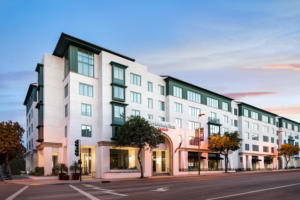 Pasadena and Irvine, Calif. – – R.D. Olson Development, in partnership with Joseph Martelli Real Estate Investments, Inc., has opened the five-story, 144-room Residence Inn Los Angeles Pasadena/Old Town in Pasadena, California. Executives from R.D. Olson Development, Marriott International and project general contractor R.D. Olson Construction joined civic leaders at the grand opening. The project marks the first hotel development in the historic Old Town Pasadena area in 15 years.
Pasadena and Irvine, Calif. – – R.D. Olson Development, in partnership with Joseph Martelli Real Estate Investments, Inc., has opened the five-story, 144-room Residence Inn Los Angeles Pasadena/Old Town in Pasadena, California. Executives from R.D. Olson Development, Marriott International and project general contractor R.D. Olson Construction joined civic leaders at the grand opening. The project marks the first hotel development in the historic Old Town Pasadena area in 15 years.
Located in the heart of Old Town Pasadena, Residence Inn Los Angeles Pasadena/Old Town is walking distance to a variety of entertainment options, including world class dining and shopping, and eclectic cultural offerings such as landmark theaters, lush botanical gardens, and art galleries and museums. The hotel is also within one mile of the famed Rose Bowl Stadium and nearby the prestigious California Institute of Technology, historic Dodger Stadium, and entertainment hubs such as the Staples Center, Nokia Theater and Hollywood.
“We are honored to develop the first hotel to be developed in Old Town Pasadena in more than 15 years,” said Bob Olson, founder and CEO of R.D. Olson Development. “At R.D. Olson Development, we make a conscious effort to capture and integrate details and sentiments that complement the local culture of our hotels, and Old Town Pasadena has so much rich history to draw from. We know that the Residence Inn Los Angeles Pasadena/Old Town will fill an important need for extended stay visitors to this dynamic area of Los Angeles County, and we hope that guests will enjoy the many nods to the local area that we have incorporated into this hotel.”
The hotel’s design elements are a playful rendition of the arts and crafts heritage of Old Town Pasadena, blending iconic period fixtures with modern detailing. The Craftsman style of interior architecture that is prevalent in many Pasadena historical homes is represented in much of the hotel’s detailing, including a hand crafted stairway with wood and forged metal railings, which stands out as a focal point of the lobby space. The hotel’s wood beams and warm color tones colors offer Craftsman and Bungalow-style undertones, and a handmade glass screen reflects Pasadena’s sentiment for artistic work and handicraft.
A large, handmade wall relief of an oak tree, made of real oak by a local artist, represents the Pasadena’s landmark Cathedral Oak tree that once divided Orange Grove Avenue in 1890. Pasadena’s iconic Colorado Bridge and Tournament of Roses Parade are also represented in artwork and vintage images throughout the hotel. Offering a comfortable, stylish retreat, the property’s interior pairs Pasadena’s rich history with the conveniences of Marriott’s latest Gen 9 Design, showcasing contemporary furnishings within a traditional, historically-inspired setting.
The hotel’s exterior weaves in subtle Mediterranean architecture and design elements through the use of parapet and tiled gable roofs, hipped-roof corner towers and plaster walls. Additionally, a variety of window openings are highlighted, including groupings of punched, multi-story windows which allow ample natural light into the building.
“Today’s hotel guests are seeking an immersive experience that is geographically inspired when visiting the surrounding area,” said Bill Wilhelm, president of R.D. Olson Construction. “We are proud to have been a part of building this extended stay service hotel in Pasadena where guests will have the opportunity to be a part of the local community while staying at the property. The building’s design adds to the historical landscape that has made Pasadena a charming and warm community to stay, work, and play.”
The 94,091-square-foot all-suite hotel is designed with a room mix that includes expansive studio, one- and two-bedroom guest suites, complete with kitchens and beautiful, upscale bathrooms to accommodate the needs of the extended-stay guest. Guestroom suites offer separate living, sleeping and working areas, as well as kitchens with high-end appliances including a refrigerator, stove, microwave and dishwasher. Rooms also include spa-like bathrooms and ergonomic furniture, creating a relaxing, home-like environment.
Guests benefit from a variety of public amenities such as a complimentary, full hot breakfast buffet, an oversized fitness center with CrossFit style equipment, complimentary high-speed Internet access throughout the property, a business center equipped with the latest technology solutions, and guest laundry. The property also features a 24/7 Market, which provides easy access to grab-and-go snacks and other on-the-go necessities.
Residence Inn Los Angeles Pasadena/Old Town offers a variety of outdoor spaces for guests to relax and reenergize amongst the beauty of Southern California. Amenities include an elevated deck with a pool and spa, outdoor play spaces including a sports court, a grilling area and barbeque, and large fire pits that offer a perfect spot for an evening beverage.
The property’s 850 square feet of versatile meeting space enables guests and community members to conduct dynamic events or family gatherings.
R.D. Olson Construction Named as One of the Best Places to Work in Orange County

R.D. Olson Construction is incredibly proud to have been recognized as one of the top workplaces in Orange County for 2016. This achievement is attributed to our outstanding staff who go above and beyond to work as a team and stay connected as not just associates but as a family united. The dedication of our team members is something that drives the entire success of our business and every individual within the organization makes it a pleasure for every other associate. Hard work can also be fun, and at R.D. Olson we constantly strive to make our environment as enjoyable as possible.
